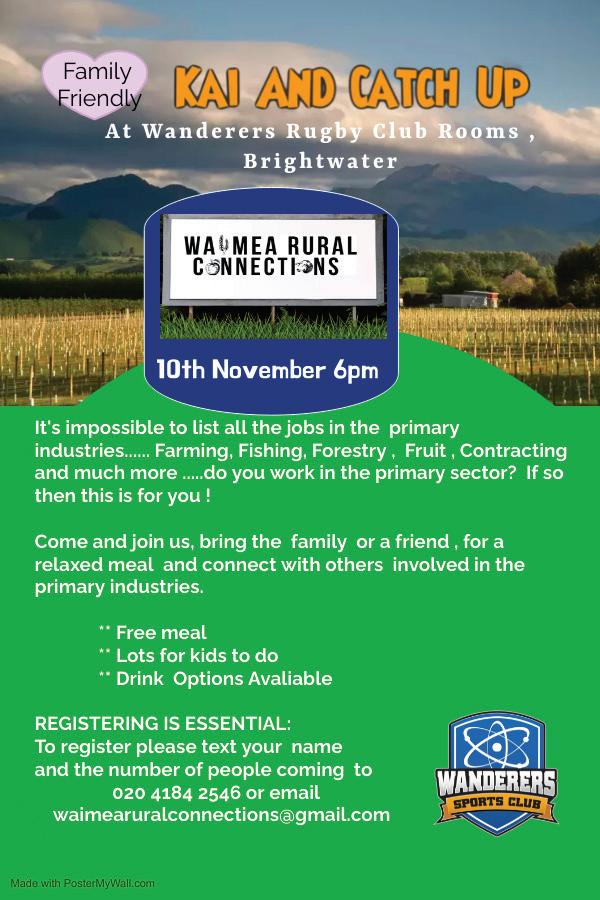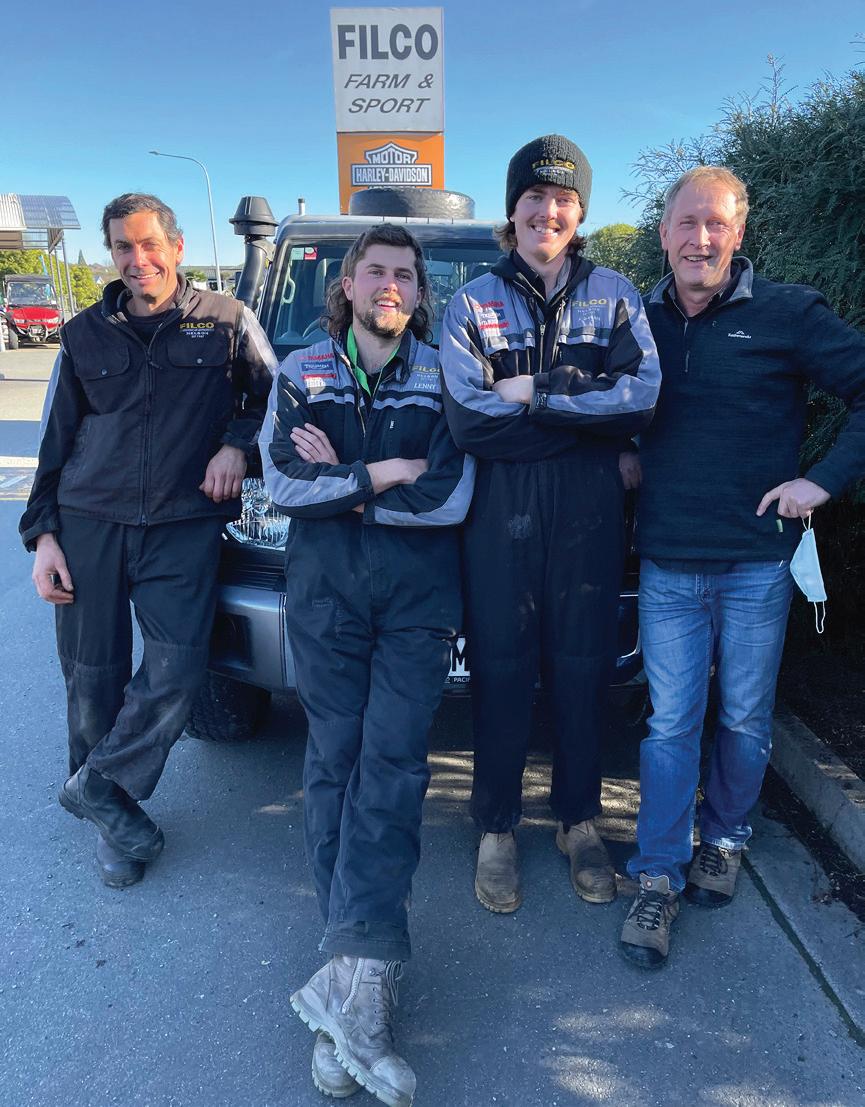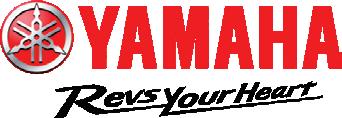












Circulating














Circulating
Advertising Sales
Danielle Brown danielle@topsouthmedia.co.nz
Summa Donald summa@nmf.co.nz
Steve Page steve@nmf.co.nz
Accounts Queries accounts@topsouthmedia.co.nz



Recently we took off for a few days at Hanmer with friends and as we left learned a valuable lesson in communication. We had a small ant problem and I thought it a good idea to set a bug bomb off in the ceiling before we left. I quickly read the instructions and left the master of the house to set the bug bomb off as we were ready to depart, which he set about doing. The final instruction was
a year now, so it’s good to see someone
has a sense of humour regarding the duration of fixing local roads. Happy Birthday Slip!


not to put the bomb into water until the last minute. This was the bit we got wrong. The phone rang and before we knew it, smoke was belching everywhere and we were scurrying about, masked up, removing fire alarms, and grabbing last minute items. The moral of the story, read the instructions together and get final steps right. We made a hasty exit laughing like a pair of teenagers. There are concerns about farmer wellbeing over the next year or two, please be

aware of how neighbours and friends are doing. There is professional help available through Rural Support Trusts to support all rural people. Together we will get through this downturn, we are told it will be temporary and there is a good future for farming up ahead. I hope you enjoy this month’s edition thank you to those who give us your time to capture your stories and especially to our advertisers, you make the paper possible.
BARBARA STUART
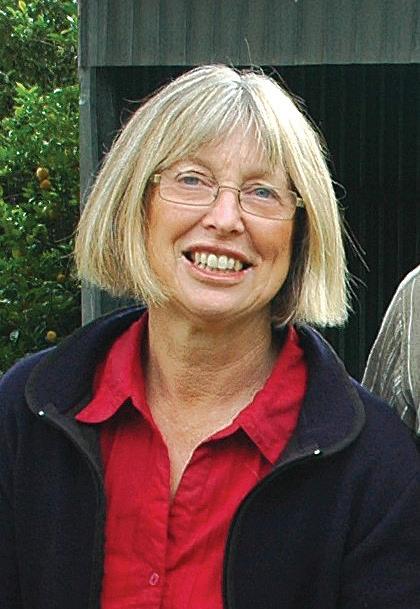
I am sure many of you are aware, NIWA are firming up their view of an El Nino weather pattern influencing our weather this coming summer. They have been trialling a drought forecasting tool and are encouraging farmers and horticulturalists to use it, to understand what might be happening in individual regions. The drought forecasting dashboard is a collaboration between Ministry for Primary Industries and NIWA.
If there is no rain about, the Drought Dashboard can help a farmer or horticulturalist, make those decisions about what crops to plant or whether to off-load stock or keep them. It gives a thirty-five day out-look predicting the likelihood of rain or what the weather is likely to do over a two-to-three-week horizon.

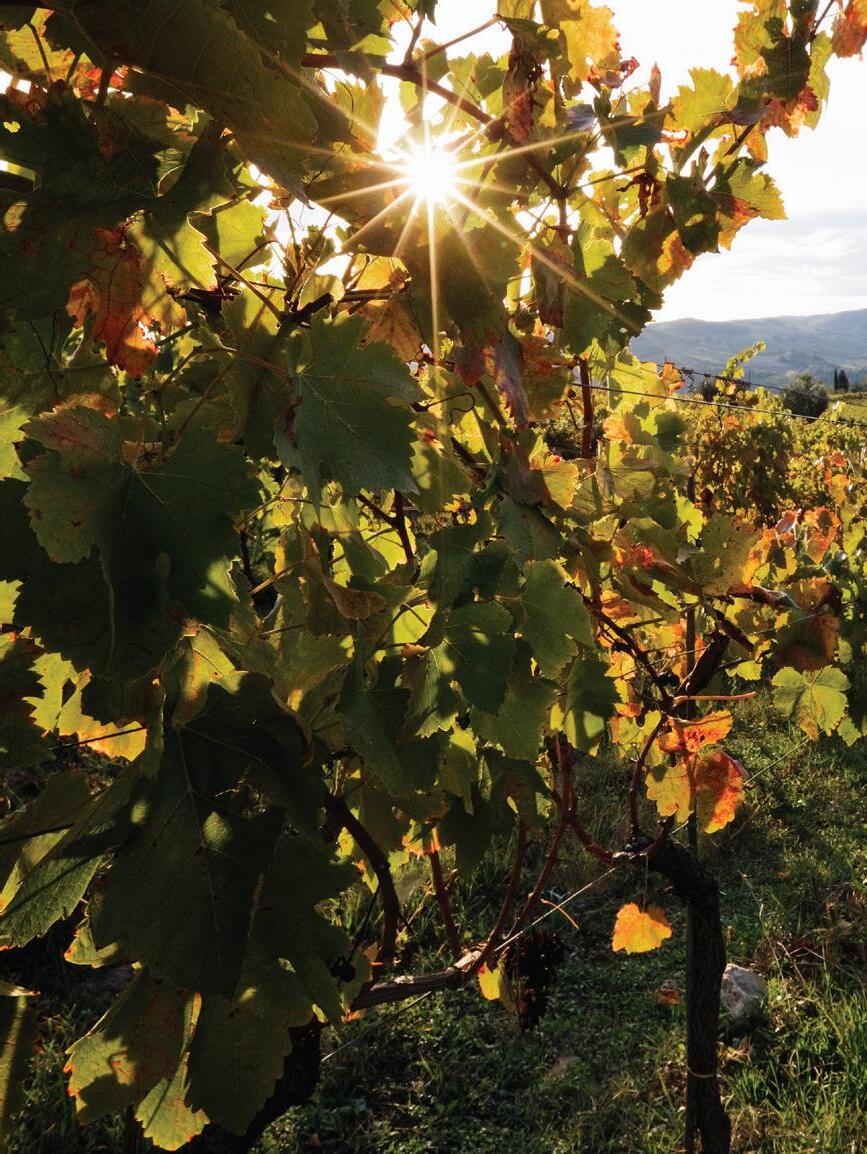
The Drought Dashboard is still in its development phase therefore feed-back to NIWA is considered helpful. shiny.niwa. co.nz/drought-forecast/

A slip on the Rai Valley saddle which has been there for
Landcorp Farming Limited, trading as Pāmu, has reported a net loss after tax of $9 million for the year to June, down from a $59 million profit last year. With Cyclone Gabrielle, continuing adverse weather, and falling market prices being impacting factors.

Livestock revenue of $107 million was $20 million down from the prior year. Milk revenue fell to $120m, down from $130m in 2022, and income from wool, forestry, and other business activities was slightly higher at $43m, up $3 million from $40m in 2022.
Pāmu say the future forecast with the recent steep decline in forecast milk prices for the current season together with softening red meat prices means that they are looking at least 12-18 months of reduced income in the near term.
“There is no doubt we are heading into a challenging cycle, but despite this, our strategy is still the right one,” commented Pāmu
Chief Executive Officer Mark Leslie “Reduced milk prices, softening meat prices, and continuing high farm costs mean we are looking at budgets line-by-line and analysing where spending can be reduced, including pausing non-essential capital expenditure while carefully evaluating feed, fertiliser, and other spending.”
“We won’t be saving ourselves to greatness, instead farming excellence, driving productivity, and optimising dollars spent is the way forward for our Pāmu teams,” he said.

Scientists in Australia are studying the countries native stingless bees to work out things such as eating habits and diet, ability and success rate of pollination as well as impacts and factors to overall hive health. The discovery of the Varroa Mite in NSW in 2022 has prompted the study as growers struggle to access healthy Euro-

pean honeybees for crop pollination and look for alternative pollinators. The stingless bees already have a reputation as an excellent pollinator for macadamias, mangoes and watermelons, and for crops grown inside greenhouses. Stingless bees only produce small amounts of honey - less than one litre per year. However, this honey (known as sugar bag) is delicious and tangy!

Food and fibre sector export revenue has hit new heights reaching $57.4 billion for the year to 30 June 2023 in the light of year-end data, bringing $1.2 billion more into the economy than was originally forecast, Agriculture Minister Damien O’Connor announced.
“Food and fibre export revenue has hit $57.4 billion, setting a new record and surpassing previous forecasts of $56.2 billion to the year ending June 2023,” Damien O’Connor said. “This represents significant growth of more than $4.3 billion (8 per cent) on the previous year to 30 June 2022.”
SOPI recorded that dairy export revenue had reached a record $26 billion – 18% up from last year while meat and wool down 2% along with forestry down 3%. Horticulture was up 4%, seafood up 9% and arable up 8%. Export forecasts are estimated to climb to $62 billion by 2027.
Don’t burn it, don’t bury it and don’t send it to landfill is the message from Agrecovery with free recycling programmes readily available for farmers, growers and lifestylers.
“We receive dozens of calls each week, and we know merchants have too, from customers wanting us to find a solution for their plastics,” explains Tony Wilson, Chief Executive at Agrecovery –a not-for-profit charitable trust.

“With an average of 10 tonnes of waste produced per farm per year, there is a real and urgent need to offer more recycling solutions to farmers and growers for New Zealand’s environmental sustainability.”


“Agrecovery is constantly investigating our ability to broaden the types of plastics that can be recycled through our programmes as well as developing
the infrastructure for repurposing it,” says Tony. With over 160 fixed collection sites nationwide, recycling of plastic agrichemical containers, drums and IBCs has never been easier.
Now, Agrecovery have launched a Small Bags Scheme for the recycling of LDPE and Woven PP seed, feed and fertiliser bags (25kg and under).

Tony says, “This is an extremely complex scheme given the myriad of products in the market and the types of plastics used.
Recycled pellets now ready for use in items such as insulation for buildings, car parts and furniture. Photo: Supplied.

It represents a significant milestone in reducing the environmental impact of plastic packaging.”
Where does it all go? A lot of the plastic is recycled in New
Zealand and used predominantly for underground electrical cable cover. Soft plastic from the Small Bags Scheme is currently exported offshore due to infrastructure challenges in New Zealand and recycled as pellets for resale into the circular economy. Tony says, “Recycled pellets can be used to make a multitude of items such as insulation for buildings, car parts, and furniture.”
“Our schemes recover good plastic and returns it back into the recycling market so that manufacturers can use this recycled content over purchasing virgin plastics, which results in a reduction of new plastics entering the market,” Tony concludes.
A dairy farm in Selwyn has been confirmed infected with Mycoplasma bovis last month after it was first identified by standard Bulk Tank Milk background screening. The find is unsurprising as we expected to identify more infected properties during spring testing, and it does not undermine our progress toward eradication.
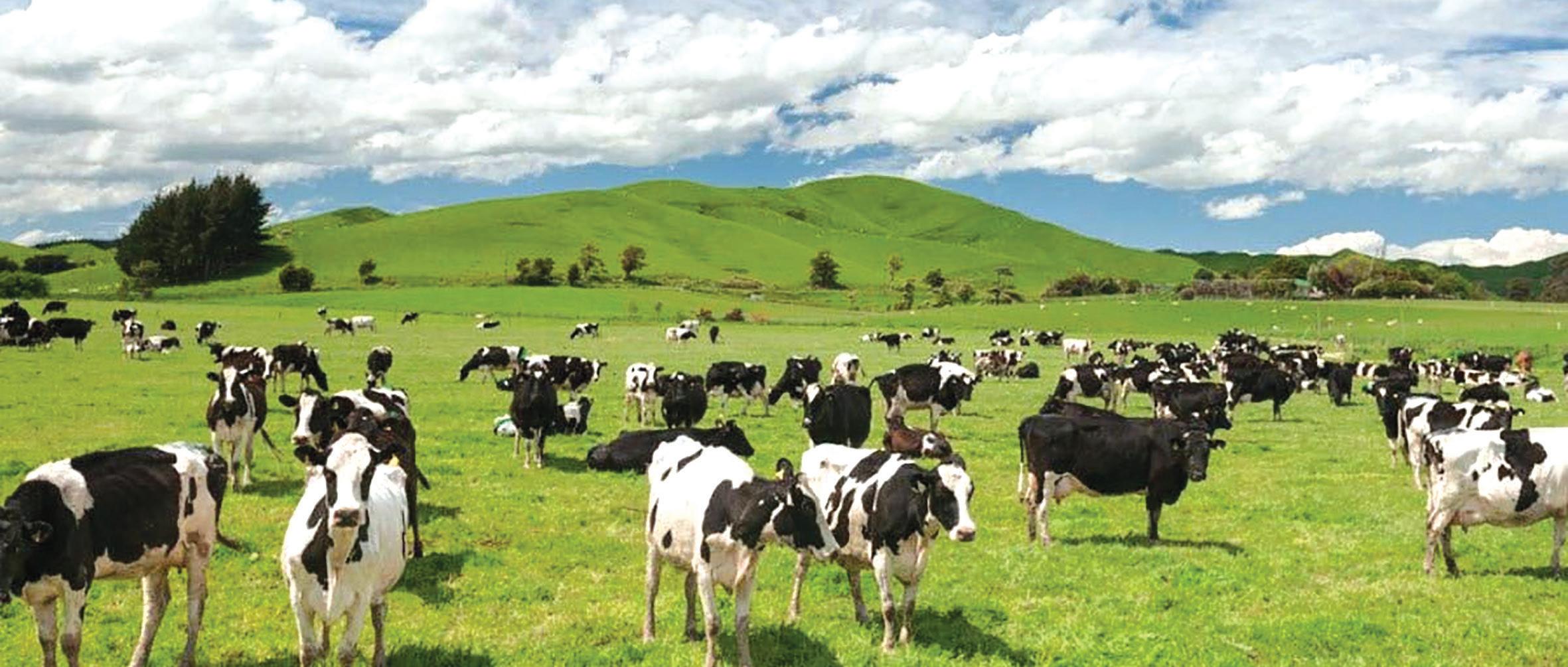
The Mycoplasma bovis Eradication Programme is working with the farmer on a plan to depopulate the farm and is undertaking tracing of animal movements on and off the farm as per our normal practice. This work will help identify the likely source of the infection and any other farms it may have moved to.

Testing has identified that the strain of this infection is ST-21, the strain originally detected in 2017. As with previous Confirmed Properties, we will likely see the number of farms under movement restrictions increase over the next few weeks as the Programme looks for
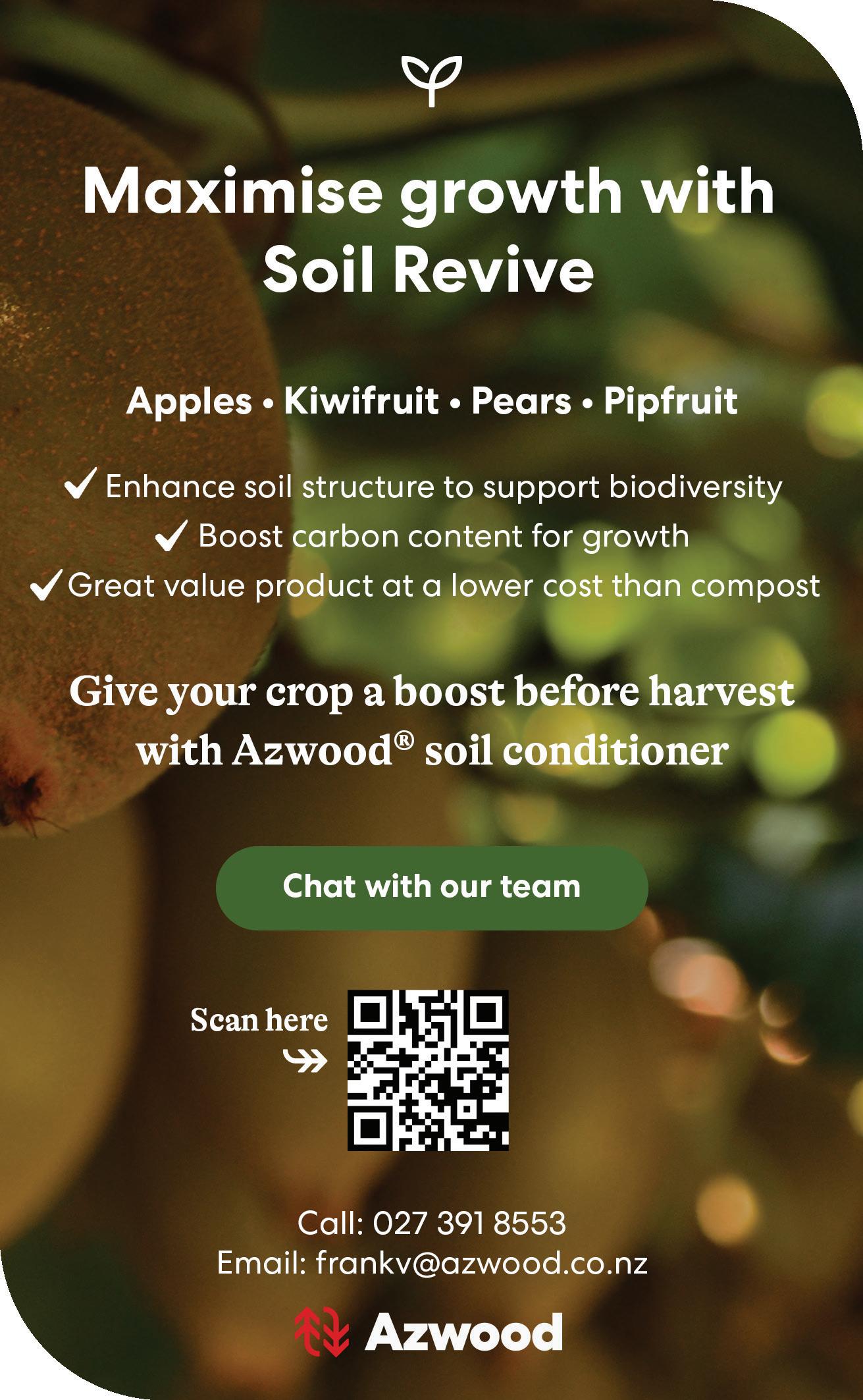



any possible infection.
Our team will be in touch with any farms affected and experience tells us that in nearly all cases these restrictions will lift quickly. Although we continue to find less infection each year, it’s important that farmers follow good biosecurity practices and record all on-farm movements. Keeping accurate and up to date NAIT records helps the speedy tracing of animals and is the best way to keep M. bovis off farms.
The find does not affect development of the proposed National Pest Management Plan to manage M. bovis over the next few years and we encourage farmers to have their say on proposals by 23 October. Please visit here for more detail.

We are now halfway through the 10-year Eradication Programme and one confirmed infected property compares with 40 (at any one time) at the height of the outbreak in 2018.

Our nationwide milk testing continues to operate well and shows no evidence of wider infection.
“The best thing about beef farming is being able to work on the land in an outside job,” says 18-year-old Zach Donovan who farms beef on his family’s 177-hectare block in Upper Moutere.
When Zach was seven his father surprised him with his own cow and calf.
“It was almost dark, and Dad said come on down and see the animals getting unloaded, I asked why, and he said he may have a surprise for me. I had just had a bath and wasn’t really keen to go out. But I did and when I got there it was dark and I couldn’t really see anything,” laughs Zach.
“It was a great surprise to see them both the next morning in daylight on my way to school.”
Zach says that he was very thankful for his first cow and calf which got him started in calf rearing.
“Beef cow calving isn’t anywhere near as intensive as dairy calving. Most of the animals we have are mature and don’t have many problems calving,” Zach explains.
“However we still have those days full of pressure where you have a lot to get done and start running out of time.”
At age eight he started to show his calves at the A & P show, only stopping abruptly because of M.bovis.
In 2019 Zach and his dad built an 8-bay calf shed on the farm and started rearing 220 dairybeef calves a year, which with his previous calf rearing experience, became his main job. A few years later Zach purchased 50 breeding cows and moved away from rearing calves. The 50 breeding cows, as well their offspring from this season, and the 45 calves from last season now run with the other cattle on his family’s farm. Running 440 head of beef and helping his family with their lifestyle block and bed and breakfast lodge keeps Zach
busy.
However, he points out that “the job itself can be isolating and I’ve found it especially hard as I left school at 16, so I left the people that were my age.
“It’s definitely helped to join the Young Farmers group and hang out with people closer to my age who understand what it’s like to work on a farm like me.”
Zach also says that it helps if you don’t go home for a quick shower just head out: “Once you get home it’s harder to get back out. You have to force yourself. It’s best not to go home first if possible.”
The farm, in Moutere, has 11 hectares of QII native bush and Zach says one of the things he enjoys the most about his job is being able to walk the hills that you can’t access by vehicle. He also enjoys all the weather elements and says, “it’s always nice to be outside, rain or shine, enjoying the environment. It’s what I like most about farming.”

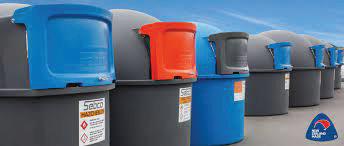
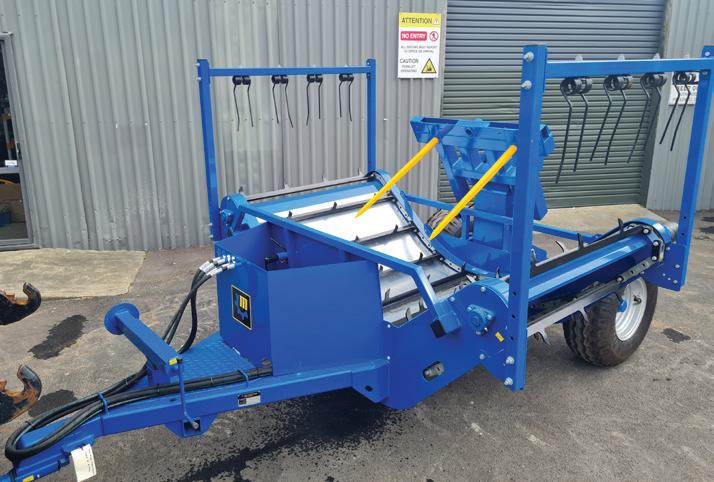






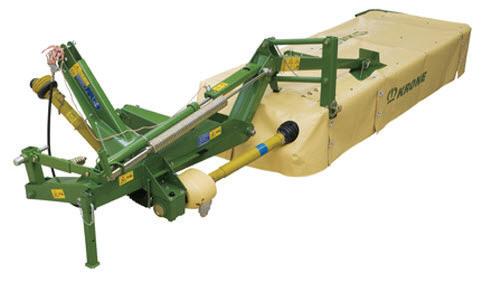





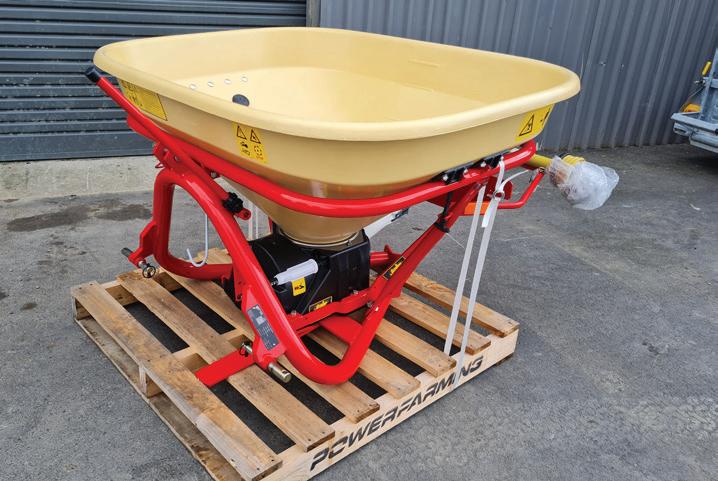

The election campaign is reaching its final weeks.
It’s easy to take for granted that we get to have a say in who governs the country, but over a third of the world’s population live under authoritarian rule and have no say.
In its most recent Democracy Index, The Economist ranked New Zealand second in the world behind Norway for the integrity of our democracy. This is something all Kiwis should be proud of.
Along with election season come the debates.
I enjoyed the Rural Issues Debate at Mystery Creek in September.
I’m well aware that the audience is never stacked with Labour supporters at these events, but I believe that Labour governments don’t get fully acknowledged for the things we have done to benefit farmers over the decades. If anything, there’s a bias against us.

That came to mind in the debate
when I was asked about the Federated Farmers confidence survey results.
I pointed out if you line up the food and fibre export results since 2009 with the net positive/ negative outlook from farmers, you see negative outlook levels since we became government in 2017, despite the fact that export revenue has surged 50 per cent to a record $54.7 billion during that time.
It’s a crude measure, but it’s worth reflecting on.
During the same period we’ve opened up more trading opportunities for our exporters than any other government – four free trade agreements (FTAs) signed and three upgraded. That will see nearly 75 per cent of our trade covered by a legally enforceable agreement - up from 50 per cent in 2017.
Indeed, it was the Helen Clark Labour-led government that opened and negotiated our FTA with China. When Helen announced the China FTA it was estimated that the deal would
increase our exports by $225 to $350 million a year. It did that… and more: exports reached $21.9 billion in 2023.
In the 1980s it was the Lange government that removed the subsidies. It was a very difficult time for farmers and I was among the protestors, but who would have thought we’d halve our sheep numbers and maintain our production?
It was a Labour Government that was prepared to tackle restructuring the dairy sector by introducing legislation to allow the setup of our biggest company Fonterra. I’m a big believer in the cooperative model.
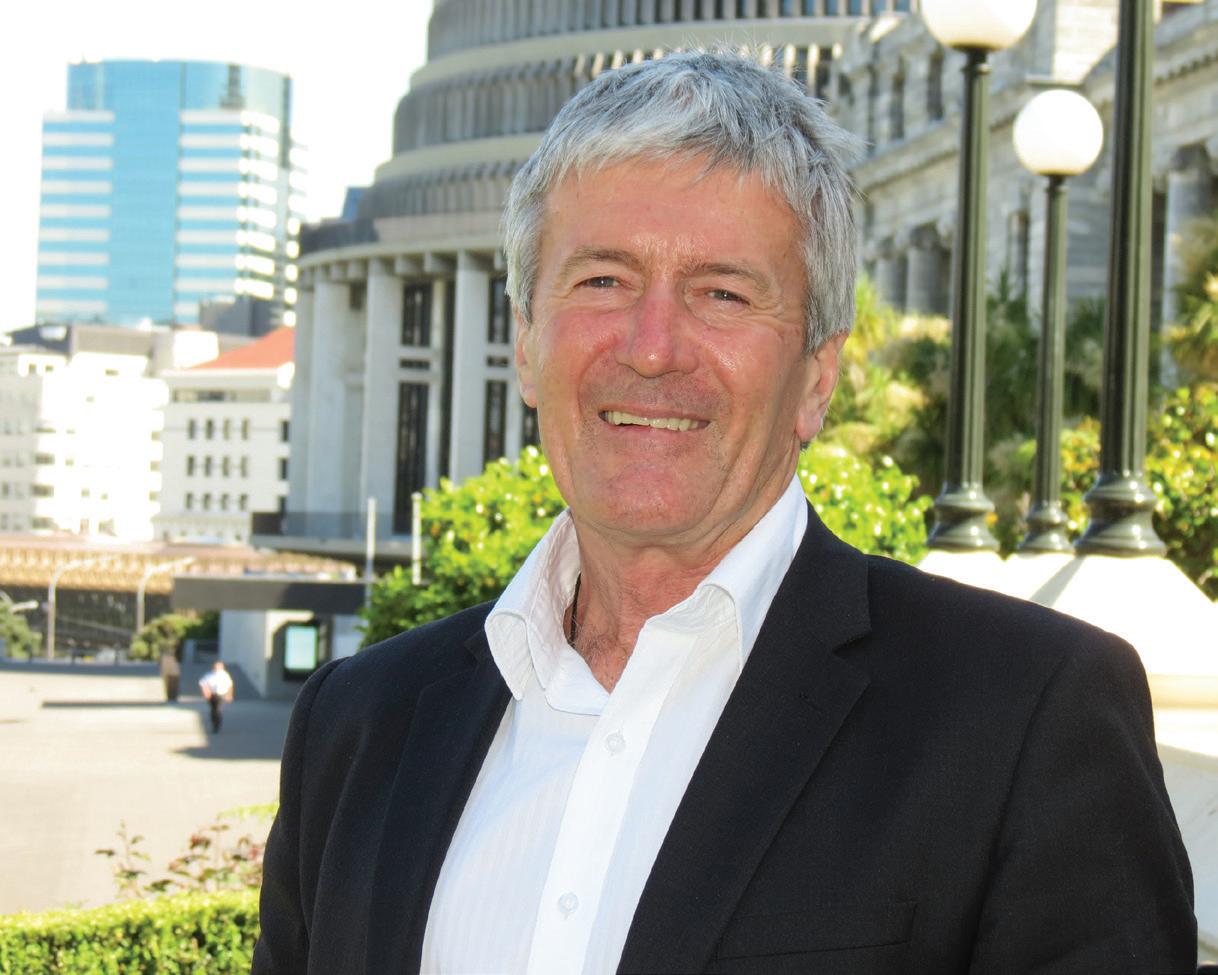

We went into bat for our dairy farmers by taking Canada to task on denying access to their market that was agreed under the CPTPP FTA. It was announced in September that we won this international dispute.
I absolutely acknowledge that there are tough times going on out there, but I ask people to stop and look at the evidence. Labour governments are prepared to



make the tough decisions, not just do what wins votes.
We took on the banks when the ethics of interest rate swaps was revealed. Rate swaps saw some farmers being mis-sold products they didn’t understand, which then crippled them financially.

We introduced the Conduct of Financial Institutions Act to protect farmers. The future of that law is at risk this election.
Attacks on this government around fiscal management just don’t stack up. Net debt currently sits at $71 billion. As a proportion of New Zealand’s GDP, that’s lifted from 9 per cent in
2018 to 19 per cent this year.


When the previous government handled the GFC, net debt as a percentage of GDP took a 6-fold increase from 3 per cent to 18.9 per cent.
That’s what happens when you’re dealing with unprecedented global events.
The independent data confirms the economy is growing, we are not in a recession, inflation appears to have peaked. I don’t mind criticism, but I encourage critical thinking that tests assumptions.
Thanks for being engaged in one of the world’s strongest democracies.
Raised on a dairy farm on the Kaikōura flat, John Barnes, founder and managing director of Fertilizer NZ, says: “Farming has always been part of me, and soil is in my DNA.”
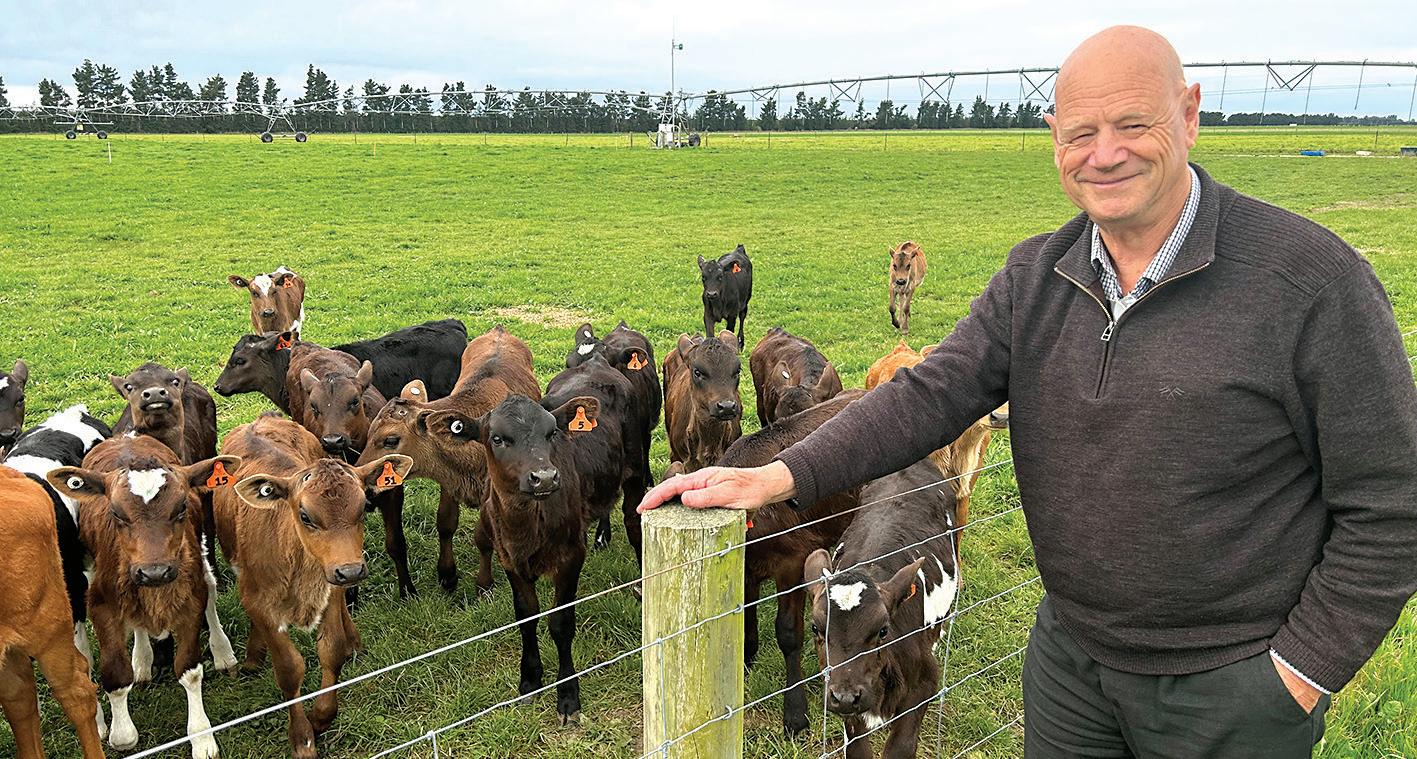
Back in the day, the family dairy farm supplied cream to the Kaikōura butter factory. However, it was much later, in the 1980s while working for an orchard on the Waimea Plains, that John started questioning fertiliser’s purpose and use.
“We were digging some old trees out and the ground was so hard. I was thinking here we are growing export apples - the soil should be more alive. There should be a lot more to soil than just tipping fert on,” John recalls.
That thought never left him and for the next eight years alongside a full-time role managing orchards growing apples, pears, kiwifruit and boysenberries, John experimented and studied soil
microbes, which, broadly defined, is a group of microscopic life forms that include bacteria, and fungi.
He was interested and impressed with his findings, so when a back injury made John’s orchard role impractical and he was diverted to a role selling liquid fertiliser throughout Tasman, Nelson and Marlborough, he took it as a chance to further extend his learnings around soil microbes and fert use.
Fast forward a few years and John was in a situation where he had an opportunity to buy a liquid fertiliser recipe. John says there was nothing like it around at the time.
“It was such a good recipe, designed by scientists for stock and health care, and without the environmental problems farmers and growers commonly have associated with conventional fertilisers. So, I took the gamble and bought it. It wasn’t a small sum that I paid. In fact, I could have brought a house with it.”
The first batches were made in an Otaki factory and shipped down in big drums via truck and trailer.
John says there was big demand for fertilisers that could feed and protect the soil and be able to nurture a healthy growing productive plant. “So it was well received and took off,” he says.
2008 saw John set up a way to produce the fertiliser in Hope, 12km out of Nelson.
“My home and life with my wife and kids was in Richmond, so I brought it home which was a good fit”.
Fifteen years later and John’s daughter Andrea, who is also pas-
sionate about the role fertiliser has to play in the future of New Zealand’s agriculture sector, has stepped up into a more supporting role at the Hope-based plant. “It’s neat to have my daughter here, this place is bigger than me; it always has been, that’s why I didn’t call it Fert John Barnes,” he laughs.
John explains he feels we all need to start making time to think about the things we are doing, how and why we are doing them. He says: “In my day it was called evolution, everything was evolving. Nowadays it’s called climate change. Either way we all need to
look at what science is telling us and make changes and find alternatives.”
Some of those alternatives could be not using as much fert or never having to inject your stock with magnesium or calcium which both result in increased cashflow and labour.

At 71, John admits that he’s ready to explore ways that he can have a break while still being involved, as to him it’s a passion not a job.
“I’m ready to take a back seat, but I’m not giving up my happy space just yet. I’m happy, out there helping others make a profit and produce a good product.”
Tutaki Valley farmer Simon Blakemore was justifiably incredulous when his Angus cow delivered three live triplets.
The occurrence is so rare that there are very few statistics. The chances of producing triplets are about one in 100,000, but usually one or more do not survive. His vet has told him the chances of three live triplets being born unaided is up around one in two million.
It was definitely a first for Simon who saw the cow with one calf last week and realised she was either trying to have another calf or had a prolapse, so he called the vet.
It would have meant getting her and the calf to the yards about a kilometre away, so he was quite relieved when he saw a second calf.
“I saw another calf and I thought, great, job done.”
The first calf was born before 9am, and by 2pm, Simon had
TOW BEHIND MOWERS
TOW BEHIND MOWERS
TOW BEHIND MOWERS
TOW BEHIND MOWERS
moved the cow away from the herd to another paddock and she was relaxed with her two calves settled on balage. So, he headed to Nelson for the afternoon.
“I went out to check them at 6pm and there was a third one. She kept them together and any time you went near them she would
get them together and they would waddle off after her like ducklings,” he says.
“They’re quite good-sized calves. One was slightly smaller but still a good-sized calf. I had to carry one up a bank and I was puffing. They would be in the 30 to 35kg range.”
Simon went and got colostrum
from a neighbouring dairy farm to feed the calves in case they were not getting enough to get them going. However, they were not interested, which meant they were getting enough from their mum.
The cow looked after the calves for a few days herself and when
another cow lost her calf, Simon mothered one of the calves onto her. This enables her to raise a calf, and it also puts less pressure on the mother.
“I mothered the calf on to another cow and it worked straight away, and I let her out after two nights.”
Two of the triplets are bull calves and the other is a heifer which Simon says can often be a ‘freemartin’ in triplets, which means she may be infertile.
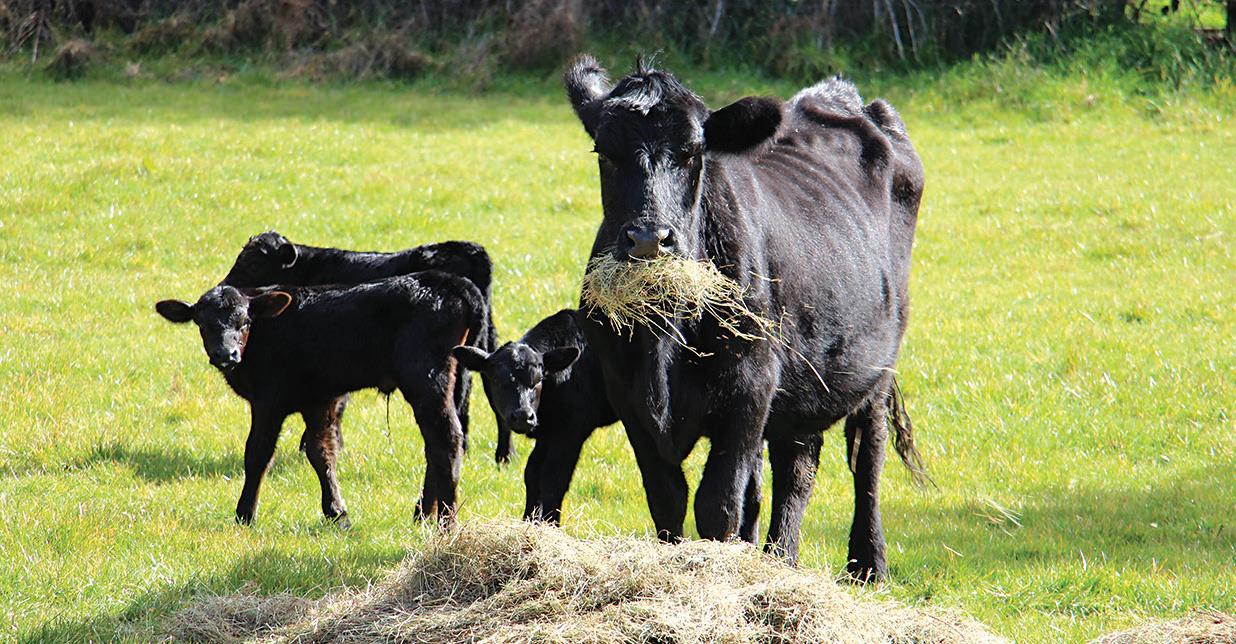
“I’ll probably get her checked to see if she can breed and keep her just for fun.”
The mother is part of a commercial beef herd and mated to an Angus bull. Simon estimates she is about six years old and would have had singles until this year. Even though he did not need to get a vet in the end, the rarity of the birth was too much of a temptation for a local vet who wanted to see the result. Simon says the vet told him that the length of time to deliver the triplets would have given the cow a good rest between each birth.
LOG SPLITTERS
LOG SPLITTERS
LOG SPLITTERS
LOG SPLITTERS
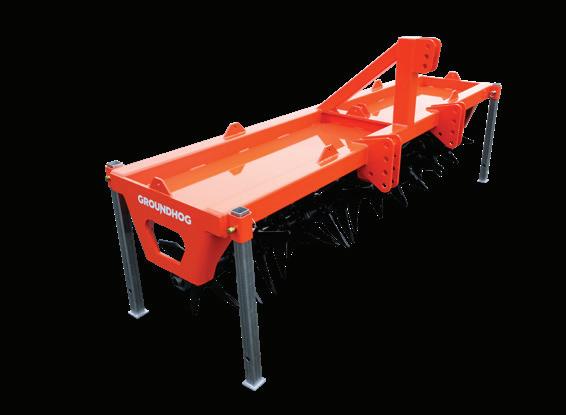




stock, motorised & tractor powered
CHIPPERS
CHIPPERS
Large range in stock, motorised & tractor powered
PTO Chippers - 3.5”, 5”, 7” and
PTO Chippers
Large range in stock, motorised & tractor powered

Kohler engines FROM $4,160+GST
Kohler engines FROM $4,160+GST
Made in NZ Kohler engines FROM $4,160+GST
Made in NZ
Kohler engines FROM $4,160+GST
CHIPPERS AERATOR
CHIPPERS AERATOR Available in 2.1m -3.6m




Nelson / Blenheim / Takaka / Westport / Greymouth
Nelson / Blenheim / Takaka / Westport / Greymouth
Visit us at 109 Bolt Rd, Nelson
BARBARA STUART
Nelson / Blenheim / Takaka / Westport / Greymouth
FREE DELIVERY to Nelson / Blenheim / Takaka / Westport / Greymouth
Visit us at 109 Bolt Rd, Nelson
Available in 2.1m -3.6m widths - NZ
Visit us at 109 Bolt Rd, Nelson
FREE DELIVERY to Nelson / Blenheim / Takaka / Westport / Greymouth
Visit us at 109 Bolt Rd, Nelson
Visit us at 109 Bolf Rd, Nelson
Visit us at 109 Bolt Rd, Nelson

Vicky and Jon Nichols farm is up the Matakitaki Valley, from Murchison and this spring they calved 500 cows. Their property is 205ha, plus they lease another 55ha support block where they winter off 200 cows.

The farm has been in Vicky’s family since 1915, over four generations and when I approached them about how they were going to get through the next season, the couple had ideas in mind.
This season they hope to repeat last year’s herd average of 450kgMS per cow and move to once-a-day milking from Christmas.
Jon says: “There is no one easy solution for the coming season. Fertiliser and interest are our two biggest costs. We met with our fertiliser rep and bank manager to work out a planned strategy and we are also looking to make cost savings across several other areas of expenditure.”
This year the couple are us-
ing cheaper semen at mating time instead of buying expensive, pre-sexed semen which guarantees 90 per cent chance of producing heifers. Instead, they are opting for non-sexed semen which will mean a slowdown in genetic gain.
“There’s also the option of accepting a fixed price for the season,” adds Vicky, “this gives stability and will mitigate risk should the payout drop more.
“In previous years we have
spent a lot of money on repairs and maintenance but this season we will not be able to unless it’s a necessity. We just plan to cut small expenses where we can.”
“The winter has been kind to us and warmer than usual, the El-Nino weather is a worry for east coast farmers however, and in this area, we often get spill-over from the West Coast,” Jon comments.
“So, we are hoping over this summer we will continue to get regular rain from the west.”

Strong. Simple. Smart.
Spread from the back. Band pile from the front. No change-over time.
NZProudly Made

Rates and row widths are simply keyed in - then you are away! From lime to gypsum & even mulch. Simple, accurate & very very versatile.

Your local Landquip stockets. Made in NZ for NZ vineyards.
Orchard, vineyard pruning sweeps. Double and single row options, heavy-duty rubber flaps or nylon brush heads.

Orchard, vineyard, and topping mowers. Front and rear mounted, side or rear discharge, wheel kits, and chain guard options.
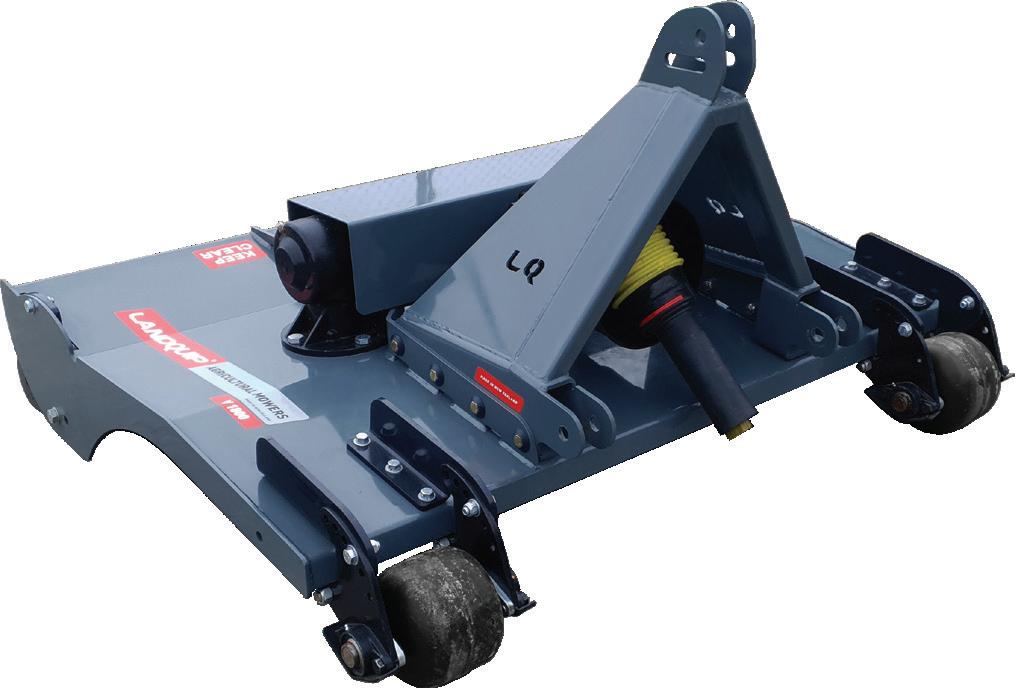
Water ballast rollers, slimline steel frame, tight turning radius, hydraulic rear wheel kit option.
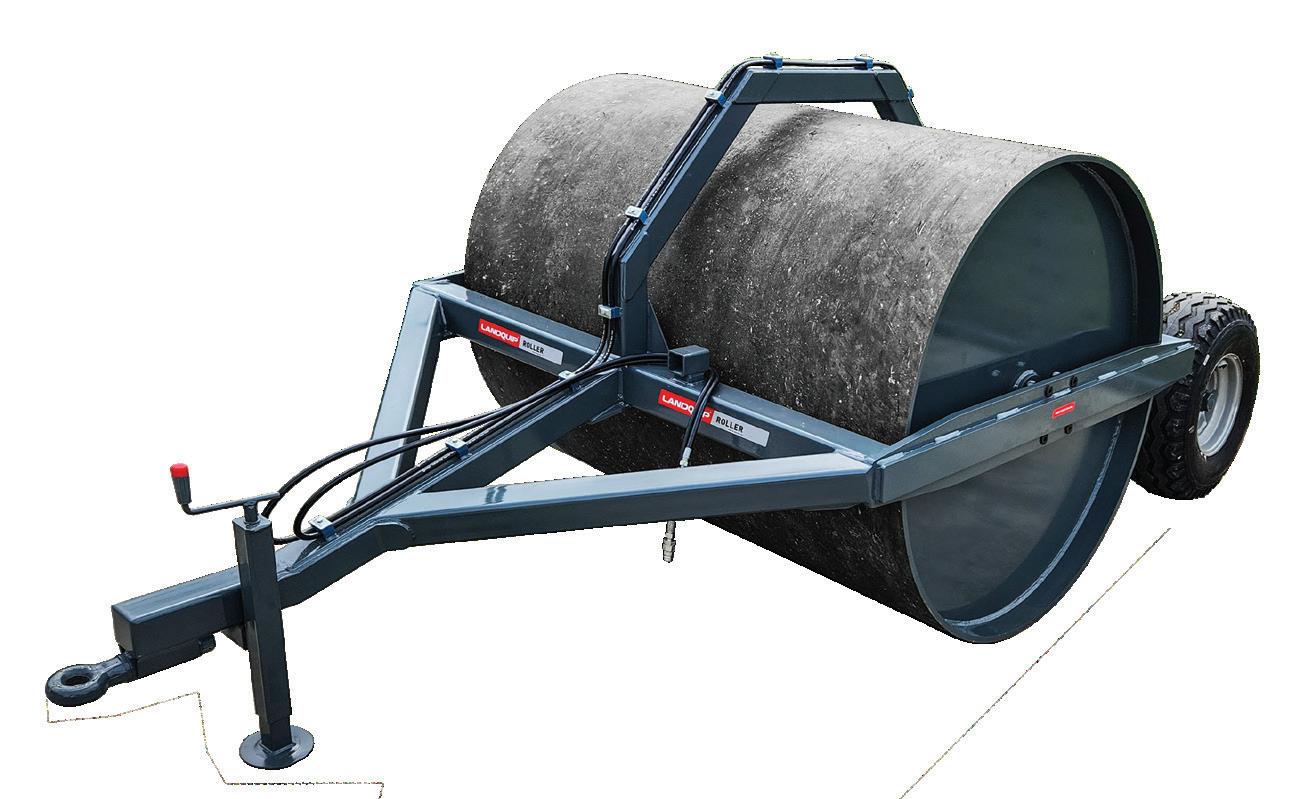



New Zealand has long been recognized as an agricultural powerhouse, with our lush landscapes and fertile soil serving as the backbone of our nation’s economy. Agriculture isn’t just an industry here; it’s a way of life, a tradition passed down through generations, and an essential component of our national identity. It’s the reason we can proudly pay our way in the world and maintain a high standard of living. But, in recent times, there’s been growing concern about the challenges faced by our farming communities due to what many see as unjustified attacks on our
farmers.
In 2022, New Zealand’s agricultural exports reached a staggering $41 billion, constituting a substantial 63 per cent of our total goods exports. Dairy, meat, wool, and horticulture are the heavy lifters, ensuring that New Zealand’s name is known far beyond our shores. The agricultural sector is also a crucial employer, with approximately one in every nine Kiwis finding employment within its folds. It’s an industry that doesn’t just contribute to the economy; it helps shape the fabric of our society.
But in recent times, there’s been a sense of unease among our farming communities due to the perceived onslaught of regula-
tions and restrictions. There’s no denying the importance of environmental protection and sustainability, but we must strike a balance that preserves our agricultural heritage while addressing the challenges of environmental protection. In many cases addressing environmental issues is a prerequisite for trade access. Farmers in New Zealand rank among the global leaders in carbon efficiency and environmental sustainability. Rather than pushing farming overseas, as some proposed regulations might inadvertently do, it’s crucial that we support our farmers in their efforts to reduce emissions and
enhance sustainability.
Farmers are not just economic contributors; they are stewards of the land, intimately connected to it in ways that few appreciate. They cherish their environment and are deeply invested in preserving it for future generations. Over the past decade, New Zealand’s farmers have demonstrated their commitment to environmental sustainability:
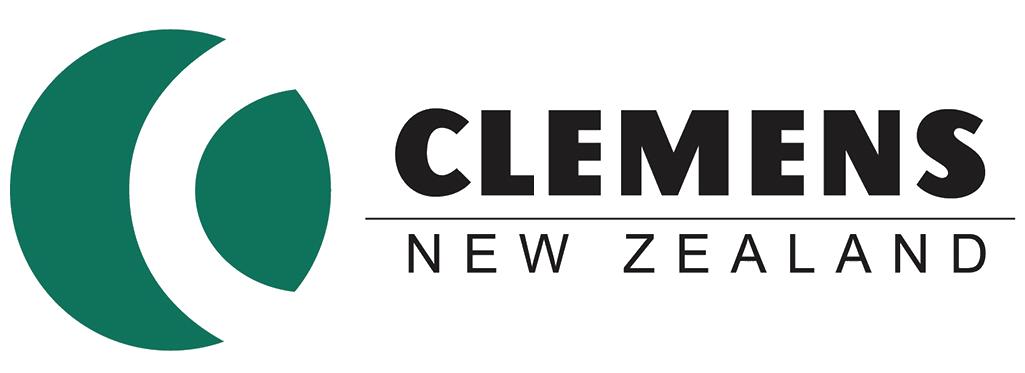
• 25,000 kilometres of waterways fenced by dairy farmers, safeguarding our precious water resources.
• Over 3,000 farm plans completed, demonstrating a proactive approach to sustainable land man-

agement.
• 98 per cent of waterways covered by the Sustainable Dairy Water Accord have been fenced, ensuring clean water for all.
• Cattle have been excluded from 100 per cent of regular stock crossing points, reducing the impact of farming on sensitive areas. These efforts, among many others, showcase our farmers’ dedication to sustainable practices and their willingness to embrace change while safeguarding their way of life.
An incoming National Government will offer greater support for our farmers who continue to lead the world in environmental stewardship and underpin our economy and way of life.
ANDREW RITCHIE
DNAiTECH, Supreme winner of the 2023 Business Innovation Award was described by the judges of the Cawthron Environmental Awards as: “A strong example of a business out to achieve good”. The biotechnology company was registered in 2020 and specialises
in rapid disease detection. CEO Murray Broom said the point of difference of their DNA test procedure is that results are produced immediately and can be carried out even in remote locations.
“The test can identify the virus or bacteria and control can be instantly carried out thereby preventing spread,” says Murray.

Renwick Sports & Events Centre, 8 Uxbridge Street, Renwick
From 10am
BY CM MECHANICAL
An example given American Foulbroud, a disease affecting beehives. The only cure for the disease is immediate destruction of the hive. The technology allows for instant identification of the problem and the hive can then be burnt, before the disease can spread. Point of Care Diagnostics can provide the best outcome in a wide variety of disciplines, environmental, biomedicine and agritech to name just a few. DNAiTECH have developed an amplifying strategy to increase the level of probability of accurate diagnosis. Murray explained that in the early days of Covid diagnosis a sample had to be taken and sent away for analysis before finding out whether the patient was positive or negative. Then along came the Rapid Antigen Test providing a result in minutes. The test was
limited in its sensitivity because the level of antigens was low. The ‘amplifying strategy’ multiplies and copies the antigen a million times making the sample easier to read. He compared it to finding 10 needles in a haystack almost impossible to find.
Multiplying the number of nee-
dles a million times will make them easier to find. To analyse a sample in the field, the company has found a way of integrating the technology onto a paper chip which is very cost-effective. The sample fluid is placed in the centre of the chip and it then streams out to the four quadrants and the results can be read without the use of a microscope or specialist laboratory equipment.
The technology has multiple applications. So far, it has been used in research into kauri dieback, diseases of beehives, identification of tropical diseases, blood analysis, water and fungal and microbial analysis in soils.
DNAiTECH has been involved in two-week programmes with NCEA level students one to three, funded by MBIE. The model has been found to engage students with science and 70 per cent of participants have indicated that they would like to be involved with science in the future.
Suppliers of all grades of industrial and household coal
• West Coast sub-bituminous coal with low ash, low sulphur and clean burning qualities
• High grade West Coast bituminous low ash coal

• Premium grades available for your boiler or multi fuel burner
• Bagged coal from 20kg to 1 tonne
• Bulk deliveries
• Coal storage in the Canterbury region for continuity of supply
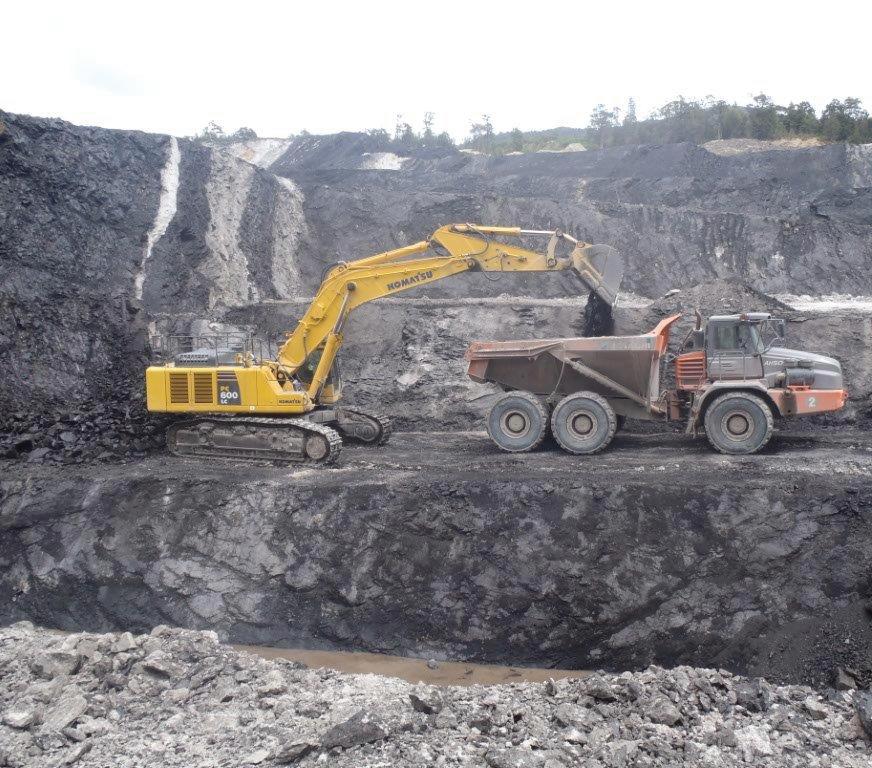
Give Mark a call on 027 531 0998 for a competitive price to have your coal delivered direct from our mines to your place.
0800 110 602
The trout season is fast approaching, and all-around New Zealand excitement is building for Opening Day on October 1. Rivers and lakes that have been closed for the past five months, open for fishing, bringing the tantalising prospect of fishing in some of Aotearoa’s finest landscapes to trout which haven’t had a lure cast at them for months.
New Zealand is one of the world’s premier freshwater angling destinations due to the large trout and fantastic scenery that work in unison to draw international anglers here. Often this means certain iconic South Island fisheries with a reputation for big fish, or great fishing, receive significant angler attention, which can, at times, impact on the fishing experience and the fishery itself. This year Fish & Game are introducing a new fishing regulation to help manage some of these ‘pressure-sensitive’ fisheries. The Designated Waters Licence is a new management regime that aims to reduce some of the pressure on these fisheries; mostly they are rivers that have a significant portion of use by non-resident anglers, and where there is data
to show resident anglers are being displaced from these fisheries. For this coming season, non-resident anglers are required to buy a Designated Waters Day licence for any of the listed Designated Waters (a $40 per day, on top of a whole season non-resident li-
cence), with a maximum of fiveday licences issued to that angler for each Fish & Game region. The West Coast Fish & Game region has two Designated Water fisheries, the Karamea catchment (upstream of Kakapo River), and the Mokihinui catchment (upstream



of Rough and Tumble Creek). For Nelson Marlborough, the listed Designated Waters are the Travers River (upstream of Lake Rotoiti), Upper Wairau River (upstream of Six Mile Creek) and Matakitaki River (upstream of Horse Terrace Bridge).
For resident anglers, all that needs to be done is to purchase a Designated Waters Season licence (at a cost of $5 per region they intend on fishing), along with any of the whole season licences. There are no limits on the number of days a resident angler can fish any of the Designated Water fisheries. This should mean some of our pressure-sensitive fisheries receive a bit less attention, hopefully for the benefit of Kiwi anglers. Fish & Game staff and honorary rangers will have a significantly higher presence on these fisheries this season to try and ensure compliance with this new directive, arguably the most significant regulation change for some time. While plenty of anglers will be dusting off their packs and heading yonder into the hills next month, there is also a myriad of waterways accessible within a short drive that can be just as good – tight lines for those heading out on October 1.
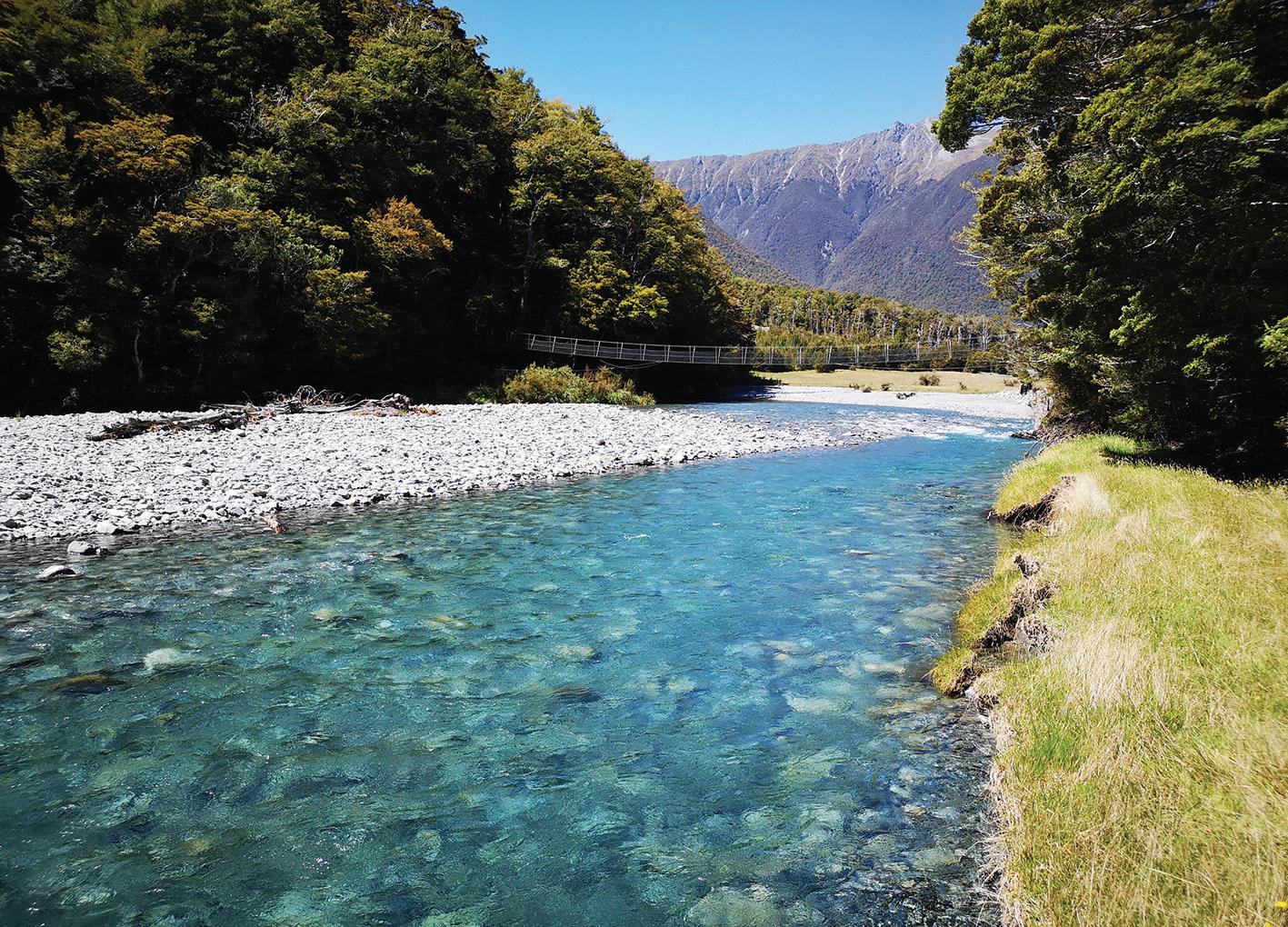
“If the names Cederman, we’re related,” smiles Motueka orchardist, Russell Cederman. “We are all the descendants of two Swedish brothers Johan (John) and Gottard Cederman who arrived in Nelson in 1867.”
Both men were trained seamen and had heard about the productive soils of Ruiwakaand developed a plan to come to New Zealand. They learned to speak English and made financial plans to transfer Swedish funds into sterling.

The brothers were looking for an opportunity which was impossible in Sweden due to the feudal land system. The pair signed onto a Merchant ship bound for New Zealand and on its arrival absconded. They hid out in the Grampians behind Nelson for three days while the ship’s horn was sounded for their return.

Russell chuckles: “After a farmer spotted them, apparently a local policeman was sent to return them to their ship but, on sighting the two very tall strong men he realised he couldn’t apprehend them, and consequently their ship departed without them.”
John is Russell’s great grandfather. The brothers made their way to Orinoco where they joined the Brethren community and found
employment. The two big strong, hard-working men who could carry a sheep under each arm were very employable.
According to family records an English friend of the brothers had contacted the Brethren community to introduce them by letter before they left England. Eventually they were able to buy land; John remained in Ruiwaka while Gottard went to Bainham in Golden Bay.
Since those early days Cedermans have been living in the area owning land as orchardists, tobacco growers and farmers. The original Cederman homestead situated at Ruiwaka was built by John Cederman in 1885 and is still standing.
Russell and his brother Peter have been in partnership together since 1974 with their wives
Heather and Sue. Son Duncan has also joined the business. Over the years they’ve been through the highs and lows of growing both tobacco and kiwifruit, but always stuck with pip-fruit.
During the time Bill Rowling was in parliament tobacco was popular. However, eventually growers were paid to stop growing tobacco and use the funds to diversify into other crops. Berries, blackcurrants, and tea have all dropped away.
Currently, the Cederman’s have
90ha producing peaches and apples, they own most of the land, but a proportion is leased.
Russell says: “The industry has changed, orchards have become more corporate, which is big smart business these days, and to meet market requirements.
At peak season the Cederman family employs around 100 workers including a crew of 80 Samoan, Recognised Seasonal Employees (RSE’s). Sue provides pastoral care ensuring they get help as required and social needs are met. Russell says: RSE workers are the labour backbone of the family business.

“We no longer grow varieties like Granny Smith and Cox’s Orange, these days its various red skinned strains of Royal Gala, Eve, Koru, Jazz, Dazzle and Pink Lady. European and UK markets have been impacted by the Ukraine war. “We now produce apples for the growing Asian market. Apples are exported to China, Korea, Taiwan, Vietnam, Thailand, and Indonesia. Growers are market focused.
“Motueka has the best science in developing new varieties to keep ahead of other international growers.”



One of the most enjoyable and satisfying parts of being an MP in a rural-based region is visiting farms and orchards and talking to primary producers.
The feedback I have received over the last six years follows a pattern: farmers and their staff are feeling under-valued and over-worked.
Should National be successful at the 2023 General Election there will be immediate changes for the primary sector. Our hard-working and respected spokesperson for agriculture, Todd McClay, has set the direction for primary production in his paper called ‘Getting Back to Farming’ which can be easily downloaded from the National Party website.

As if I needed to remind you, agriculture is the biggest contributor to the Kiwi economy employing one in every nine people in our workforce. National understands how vital farming is to maintaining healthy, rural communities – last year 63 per cent of what we exported was from an agricultural basis. National believes that farmers deserve recognition for their efforts to reduce their environmental footprints because their livelihoods depend on protecting the environment. In the last ten years dairy farmers have fenced an incredible
25,000 kilometres of waterways. All but 2 per cent of the Sustainable Dairy Water Accord have been fenced. In short, we can proudly claim that New Zealand farmers are among the world’s most carbon-efficient operators.
But for the past six years the Labour Government has managed to tie farmers up in what we call ‘red tape’. They have introduced or changed 20 rules that have added more compliance costs for farmers, meant more time in the office, and without any tangible environmental change.
A National Government will cut through and end Labour’s red tape. Take a look at our ‘Getting Back to Farming’ package of 19 changes, backing our farmers whilst still protecting the environment. We are committed to delivering smarter rules for rural operators: we will super-charge the rural economy and make sure that we get Wellington out of farming. There are further announcements on emissions pricing, agriculture research and development, water and water storage as well as a comprehensive primary industries policy.
This all makes it essential that you, your families and staff all get out and exercise your democratic right to vote. Advance voting from Monday 02 October makes it really convenient – the polls close at 7pm on Saturday October 14.
The impacts of cuts to forecast milk payments to the nation’s 12,000 dairy farms will ripple across the wider economy, and the arable sector will also feel it, Federated Farmers Arable Vice-President Grains, Andrew Darling, says.
The July AIMI (Arable Industry Marketing Initiative) survey shows sown and intended sowing feed wheat and feed barley crops are down 6% and 15% respectively on last season.
“There’s probably still a reasonable market for feed grain in the North Island but it’s hard to transport South Island grain up there at a reasonable price, especially in competition with Australian grain.

“It’s an expensive bit of water that splits our country in half, unfortunately,” Darling said.
Sowings and intentions for malting barley - the barley used by our breweries - is up 77% on the 2023 harvest but while that sounds
impressive, the hectares involved are relatively small (from 9,105ha to 15,569ha).
Overall, 2023 harvest data showed that yields were up 6% over the six malting/milling and feed crops and the area harvested, 96,022ha, was similar to 2022 (up 1%). The net result was a 7% increase in total tonnage compared to last season, the AIMI report found. Feed wheat yields were up an estimated 1%, feed barley yields up 11%, milling wheat yields up 4%, malting barley yields up 6%, milling oats yields up 15% and feed oats yields down 2% compared to last season.
The estimated 2023 final tonnage of milling wheat at 113,700 tonnes, is up 44% compared to last year’s harvest “but we knew what was coming,” Darling said. “The weather last year was really poor.”
The amount of unsold milling wheat at 1 July this year was 26,700 tonnes (24%), higher than at 1 July 2022
(15,500t).
A large amount of the sold feed wheat (58%) was still stored on farm.
“A good amount of this will likely have been at a good contract price for the grower, and the merchant will be starting to move that grain now. Dairy farmers, given the outlook, probably aren’t as keen to fill feed silos at the moment as they have been in past seasons.”
Two thirds of the estimated 289,100 final tonnage of feed barley has been sold, with 38% of that grain still stored on farm. The amount of unsold feed barley was 97,000 tonnes (34%), considerably higher than at 1 July last year (59,300t).
Growers in the North Island and in Southland are looking forward to better spring conditions after a wet autumn and winter, Darling said. Some crops in Southland were drowned. There was plenty of winter rain in Canterbury too but reports from that region are that most autumn crops have established well.
Dryland cropping farmer Tom Rudge farms on the fertile mid-Canterbury plains between Rakaia and Methven. There are two predominant soil types on the property, a well-draining deep Templeton silt loam and a Lismore shallow silt loam. Nestled between the foothills of Mount Hutt and the coast, the annual temperature is 9.2 degrees with an annual rainfall of 967mm. The area experiences dramatic extremities with short, cold winters and occasional snowfall, switching to drought-prone conditions in the early summer months.
Tom specialises in an intensive crop rotation that consists of consecutive cereal crops, wheat, and barley, followed by a grass fallow period before returning to the cereal rotation, a cycle that is reliant on high nutrient inputs. Seven years ago, Tom become frustrated with their traditional NPKS approach as they were seeing the same issues paired with underperforming crop yields year-on-year.
Production was suffering in key areas:
The turning point came after Tom attended Neal Kinsey’s introductory soils course, summarising American scientist William Albrecht’s work. This was revolutionary as it not only focused on the volume of different elements present in the soil profile, but the relationship between them. The research resonated with Tom’s willingness to try an alternative soil science, and they haven’t looked back. Over the seven years since switching approaches, they have observed:
1. Seeds establish a strong root system early

2. Seedlings experience less disease/pest pressure



3. Greater resistance to extremities like summer dry or wet downpours
With these results, Tom “wouldn’t hesitate to recommend switching to Golden Bay Dolomite for other farmers to improve their crop health and production. GBD is easy to engage with, and there have been no problems ordering GBD products or delivery timeframes. Incorporating GBD into our cropping program is seamless and it goes on paddocks without any issues.”
DairyNZ’s 2023 View from the Cowshed survey highlights the significant impact off-farm factors are having inside the farm gate. The recent fall in the farmgate milk price has only added to farmers’ concerns which have this year centred on the business viability impact of inflation and regulations.
“This year’s View from the Cowshed survey shows farmers have been very concerned, for some time, about the impact of inflation and compliance on their businesses,” says DairyNZ chair Jim van der Poel. “Declining revenues from the reduced milk price will create additional challenges. It’s vital we support farmers to succeed, given their significant contribution to local communities and their economies.” Dairy is projected to generate over $25 billion in export revenue this year alone. Farmer concerns from the View from the Cowshed have contributed to DairyNZ’s five policy recommendations for after the 2023 general election.
Farm finances: Over the past year our dairy farmers, like all Kiwis, have felt the pinch of inflation, with almost 75%

reporting experiencing cost increases of over 20% in the past year. “This is impacting their business viability, especially when combined with the reduced milk price. Many farmers will be struggling to make ends meet and focused on minimising losses this year,” says Mr van der Poel. “It’s vital the forthcoming Government keeps tight control of spending and avoids contributing to inflationary pressures.”
The View from the Cowshed survey shows dairy farmers’ biggest concerns about government regulations are being unpractical (72%), too much change at once (69%) and the speed of change (64%). “Regulatory requirements are negatively impacting farmers and their businesses, while excessive regulations are creating frustrations.
It does not make sense to add additional regulation costs for little benefit,” says Mr van der Poel. DairyNZ is calling for an independent regulatory review panel, made up of experienced farmers from across the primary sector. “The panel would review all proposed regulations to ensure they are necessary, practical,
cost-effective and will achieve desired outcomes,” says Mr van der Poel.
The View from the Cowshed survey findings also emphasise the pressing need to resolve workforce challenges, including staff shortages and retention. A total of 26% of farmers say they don’t have enough staff to meet their needs, while 29% are never or rarely able to find staff with the skills and experience they need. “To fill staff shortages on dairy farms, we need to recruit people best suited for the roles,” says Mr van der Poel. DairyNZ wants policymakers to continue collaborating with sector organisations to improve recruitment and retention.
This includes flexible immigration policies and support for the Great Futures in Dairying Plan (the sector’s longterm plan to build great workplaces and workforce).
48% of farmers say they or someone on their farm have experienced mental health issues in 2023, and 60% say there is not enough rural mental health sup-
port. “DairyNZ is advocating for dedicated rural mental health funding and an increase in the delivery of appropriate services in rural communities,” says Mr van der Poel. “Increased financial pressure over the next year means it’s very important we accelerate this work.”
Most farmers surveyed in the View from the Cowshed think the current methane reduction targets for 2030 and 2050 are too ambitious. “The methane reduction targets must reflect scientific developments, global emissions goals and the economic realities we face, and accurately reflect the warming impact of methane. That’s what we’ll be advocating for when the Climate Change Commission reviews emissions reduction targets in 2024,” says Mr van der Poel. “Overall, dairy farmers are doing a magnificent job delivering for their families, communities and New Zealand. There are challenges ahead for the sector and we need to avoid putting unnecessary barriers in the way. DairyNZ will continue to advocate for the sector’s success and ultimately that of New Zealand.”
Like most rural kids, Tristan Graham drove tractors and diggers at a young age and grew up around machinery.
Now, the 37-year-old is the owner and operator of TG Contracting, an earthworks business. Tristan was raised in a large family on a small kiwifruit orchard in upper Tākaka.

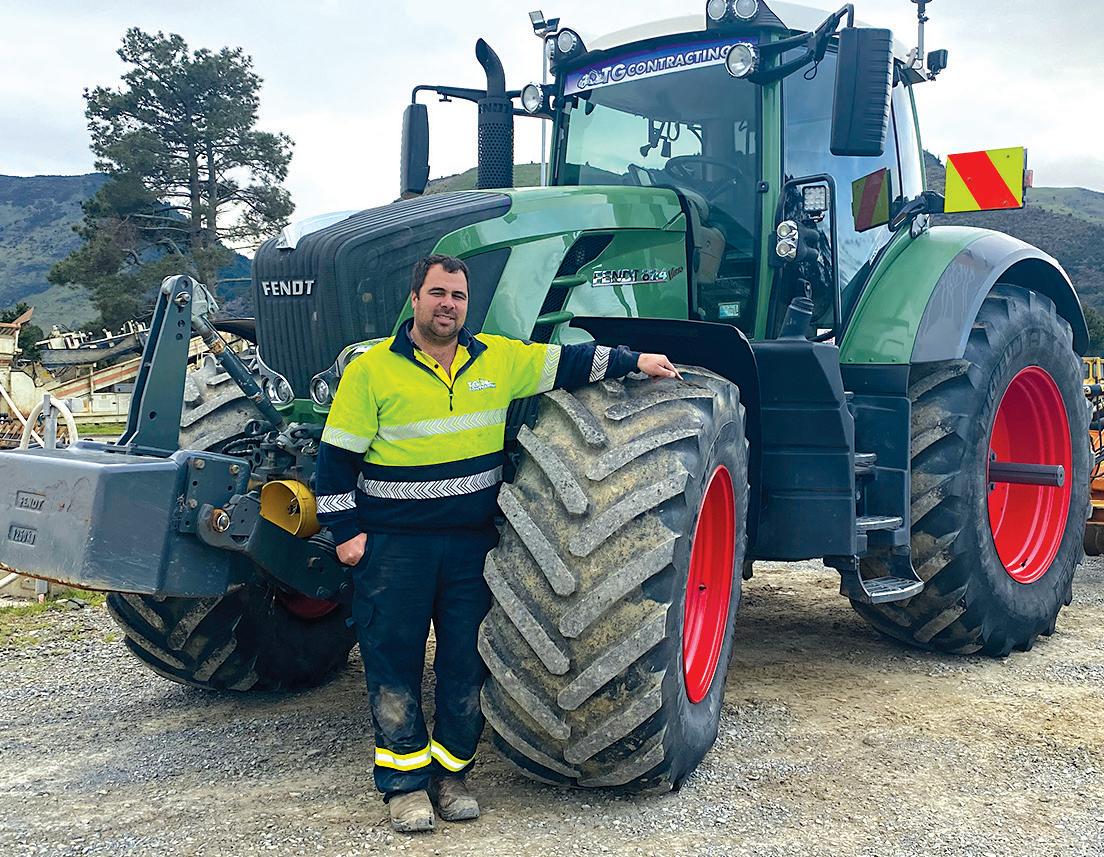

“I guess coming from a large family we had to be a bit more independent,” he says, “however I was the same as most rural kids and drove tractors and diggers at a young age and grew up around machinery.”
Tristan’s first job was for the forestry sector in the Tasman region where he completed a Certificate of Forest Harvesting.
“The forestry work included a lot of digger work, so I learnt heaps and liked the type of work,” he says.
Tristan says he is ‘“ambitious and enjoys challenges” so when the opportunity came up to own his own earthworks business, he jumped at it.
“My father was a great help when I started out, he was always in the background helping and a solid bookkeeper.”
Ten years on and earthworks remains a core part of the operation, however five years ago
Tristan expanded to meet local agricultural needs which has kept
his team busy.
“I really enjoy contouring paddocks and basically making rough old land into nice productive grassland,” Tristan says with
a smile.
“Now we do the whole lot. I have really enjoyed the Maize planting, a lot of rough paddocks that needed cultivating
and sorting out.”
He also says that the variety of work his company now does keeps it interesting for all the operators and has offered some a chance to learn new machines, tools and skills.
The journey hasn’t been without its challenges and Tristan says. “It’s not like it used to be. There’s a lot of red tape for us these days, especially around waterways. They are definitely making it harder for farmers. There’s been massive changes and the impact from the increased compliance means people are more cautious about what they are doing.”
Tristan says that he’s happy with how things are at the moment, and he has no plans to scale back.
“Things are good and I’m still enjoying it. Seeing my kids in the gear and what they are able to do in it is incredible and they are both great operators.”
Tristan says: “I’m realistic that as time goes on it will only get harder for people to get established in business, so I’d really like to hope that one day my boys will be interested in taking over.”
“My boys are a lot of my drive, they enjoy the machines and trucks just like me and I want to see them carry on enjoying it.”






150 years ago, the Marlborough’s first vines were planted and it is now 50 years since the first large-scale commercial vineyards were established.

Scotsman David Herd saw winemaking potential as early as 1873, planting Muscat vines at Auntsfield vineyard in the Omaka area and producing Port-like wine until 1905.


Not until 1973 did Montana Wines, now Brancott Estate, back Marlborough’s wine making future by purchasing over one thousand hectares. French Champagne maker Daniel Le Brun arrived two years later with fifty thousand cuttings excited to make a version of champagne in the traditional style, ‘Méthode Traditionnelle’. Thanks to the abundance of vine growing Marlborough land available, the 1980s saw New Zealand’s major wine producers move in and hundreds of hectares were planted. Initially, Müller Thurgau was preferred but soon replaced by Sauvignon Blanc. Thanks
to the country’s economic crisis and a glut of wine, the government paid vineyard owners to remove vines but many purchased new varieties resistant to the Phylloxera disease
Sauvignon Blanc suited the Marlborough terroir, and resulting wines put New Zealand firmly on the world’s wine-making stage creating the international quality benchmark for the variety.
Family-owned Hunter’s Winery attracted worldwide attention winning the United Kingdom’s Sunday Times Vintage Festival in 1985, and a Sauvignon Blanc from Cloudy Bay was lauded by international wine writer Oz Clarke as “arguably the best in the world”.





Thirty-thousand hectares were eventually covered with vines, creating the distinctive look of the region with 70% of New Zealand’s cultivated vineyard area, 75% of all wine production and 300 to 400 million bottles annually.

There are now over 140 vineyards in Marlborough from corporate operations to small boutique affairs, with many more grape varieties - with Pinot Noir considered a rising star.
The size and complexity of the region’s wine has spawned many developments for New Zealand’s wine industry. Wine Marlborough Ltd, formed in 1992 trading for the Marlborough Wine Growers Association, has been pivotal in providing educational education for the industry, managing its growth, protecting industry interests with research and pro-
moting the many achievements.
New Zealand’s longest running wine festival, the Marlborough Wine and Food Festival, established in 1985 to celebrate local wine and fine foods, continues to draw almost 8000 people annually - a third from outside of the region.
Nelson Marlborough Institute of Technology hosts the world leading Bragato Research Institute, which was built on behalf of NZ Winegrowers.
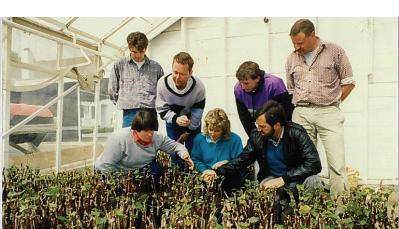
It aims to keep New Zealand at the forefront internationally, as the only such national body of its kind to undertake collective process, technology and sustainability research.
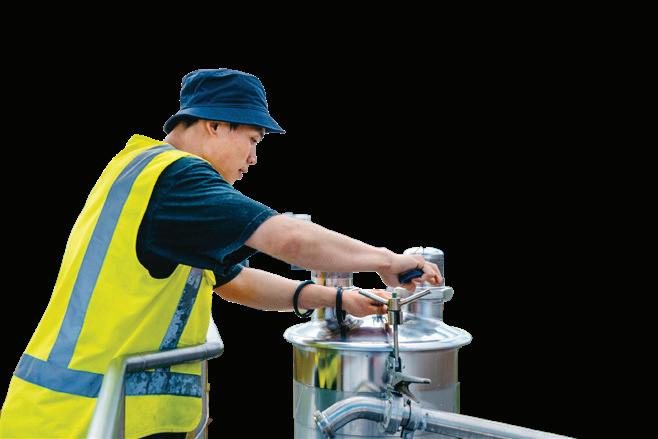


The New Zealand Wine Centre, a central hub to foster research, education and development of the sector, and experimental vineyards add even more opportunities for research and training.


These facilities acknowledge Marlborough’s standing as an internationally important wine-making region, benefitting both regional and national economies. Marlborough has also been a key region for vineyard inventions, including modified net winder managed by one person, wine tanks, vine strippers, under-vine mowers and specialised multiuse vineyard machines.
The Auntsfield vineyard till found few of the original mother vines were miraculously located, allowing new vines to be propagated which, in 2004, were planted by David Herd’s great-grandson in the restored vineyard.

When Frank Yukich, founder of Montana Wines, planted his first vines in Marlborough he prophetically stated that “Wines from here will become world famous.” He was so very right.

“Wines from here will become world famous.”
Frank Yukich, founder of Montana WinesNMIT hosts the world leading Bragato Research Institute, aimed to keep New Zealand at the forefront of international wine research and developement. Photo: Richard Briggs.












GARRICK BATTEN
Farmers can learn about pre-election agricultural policies from political parties’ websites and the mid-September debate. They could welcome the common aim of the right-wing parties to cut red tape and rejig confusing and costly regulations. Both National and ACT plan to back off and let farmers get on with what they know best, with broad promises and varied details. NZ First’s Northland-heavy policy of 27 points is similar and more extensive.
Labour makes no apologies for regulations and the Greens believe regulations are absolutely critical to meet essential standards. Minister O’Connor’s statement that every farmer has a different system needing flexibility to work with them contradicts the one-size-fits-all framework that has made them so troublesome. He claimed NZ was the lowest country for agricultural regulations, not noting NZ was also lowest in supporting farmers to overcome environmental challenges, with examples in last month’s column.
After six years of Labour’s regulations to direct and manage




farming, it largely ignores current results with its future policies to continue longer-term emphasis. Adaption to climate change takes a back seat behind the ambitious policy for NZ to stop global warming that it claims will avoid cyclones like Gabrielle.




The Green’s radical adaption policies focus on the climate and its plans to protect farming. It will turn farming from “one of our biggest environmental problems” when the biggest problem is people who need food and the 80% of our export income that pays for their living and society.
Farmers have to accept changes from the current base of corporatised, industrial food factories as the biggest climate polluters because they use the to-bebanned PKE and make rivers and lakes sick. They will have to prioritise traditional mātauranga food production knowledge, understanding, wisdom and skills for subsistence farming that also ensures Māori food sovereignty. Their unspoken plan is to shift NZ to regenerative organic practices for land use and food production. It is not clear why, as NZ science is still researching whether this is relevant to
our needs. They plan to phase out synthetic nitrogen fertiliser used to produce 40%+ of world food. Nitrogen is a major plant food and has to come from somewhere. They recommend planting clover and tree lucerne, and applying worm castings, fish fertiliser, animal manure, chicken litter and bone meal. Human excrement is not mentioned. Such urban-based concepts of composting and home gardening are not relevant to national commercial food production and NZ pastures already contain clover grazed by mobile composting machines dropping manure. The Sri Lankan organic food and economic disaster is ignored. Their dairy farming target ignores the needs and practicalities of producing edible plant foods on limited areas of arable/horticultural land. But accepts that contour, climate, soils and locality of most farmed land suits only grazing animals with the policy to reduce that area and also significantly reduce livestock numbers. Is the real policy to plant more trees?
Long on rhetoric and short on reality, farmers could describe this whole policy as based on ignorant, illogical ideology.
104 Bryant Rd, Brightwater
If you’re in the horticultural or agricultural industry, you will know prime land on the Waimea plains is seldom available let alone bare land with minimal improvements and not overcapitalised. Here is your opportunity to secure exactly that with just under 10 Ha and a resource consent to irrigate 8.6 Ha approx. with a maximum rate of 2200 m3 per week, via a bore located on the property. The recently renovated three-bedroom, one bathroom cottage would make superb workers accommodation and the property also has a building consent to build a second dwelling in place. So, this option could also be explored by the new owner, and then perhaps have the cottage as a rental? Other improvements include 2 x 3 Bay farm implement sheds and cattle yards.
Price
By Negotiation over $1,330,000 + GST (if any)
Toby Randall
M 027 233 9170 toby.randall@harcourts.co.nz


12 Loop Rd, East Takaka

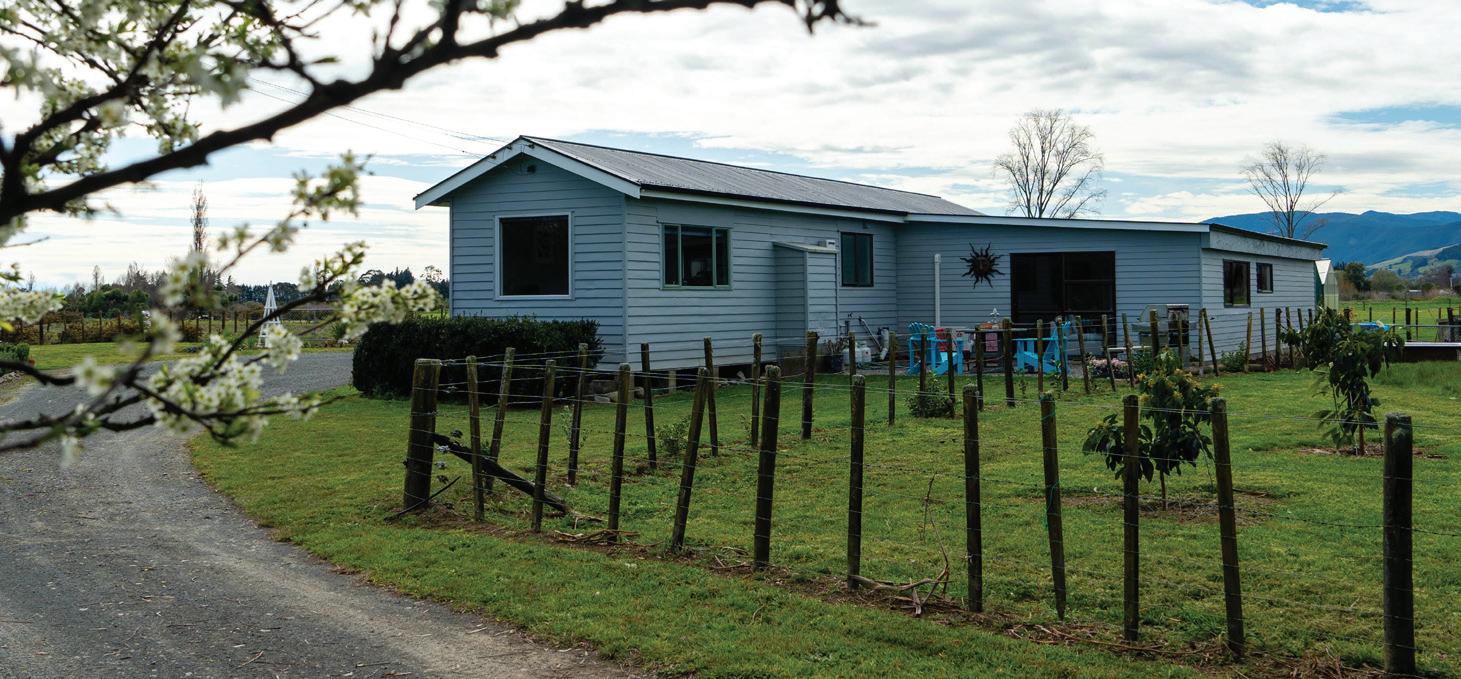
Prime productive land in Golden Bay is seldom available, and even rarer to have no house or high value improvements that you’re paying for, that you don’t necessarily want or require…
The location is also on point for lifestyle, or just land banking purposes being only 7.8kms from the Takaka township, and very handy to everything else that Golden Bay has to offer. The land consists of 84.4 Ha approx. of ex Dairy productive river flats, with plenty of future options for a house site if that’s on the cards, with all day sun, and an expansive view over the mountain ranges. The property is very well appointed with excellent farm shedding as well as the decommissioned 40 bale rotary dairy shed. The land is currently leased out to a well-respected local family as a support and grazing block, and is leased until June 2026, for an attractive rate and good return on investment. If you’re wanting to invest money in the prime piece of land, or maybe secure your future grazing, support or prime beef finishing block, give me a call today to find out more.



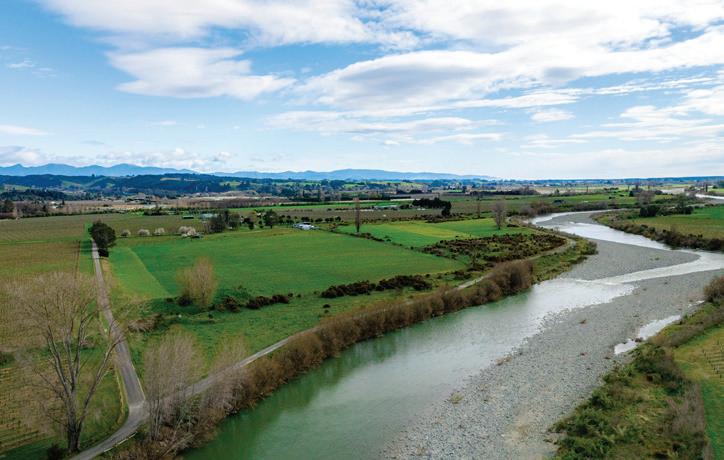

$2,150,000 + GST (if any)
Elisha Shefford
M 021 354 742 elisha.shefford@harcourts.co.nz

Toby Randall
M 027 233 9170
toby.randall@harcourts.co.nz

our industry.
If you are considering buying or selling a lifestyle or rural property talk to Team Toby Randall and let us show you how we can help.


We work with a large network of Rural and Agri specialists across the sector, keeping us up to date with the ever evolving market place we work in.
Luxury Lifestyle near Patons Rock Beach
Only once in a Blue Moon does the perfect lifestyle property become available in Golden Bay and 120 Patons Rock Road meets that criteria. Located just down the road from the golden sands of Patons Rock Beach is this beautiful property with a stunning virtually new four-bedroom home. The design fits perfectly into the surroundings with a country homestead feel yet having a modern edge to it. Located close to the house is also a new garage that is lined, with a workshop and room for three vehicles. The surrounding gardens are established with a fantastic vegetable garden and plenty of fruit trees. Adding to the luxury lifestyle picture are 600 Hass Avocado trees – 300 planted two years ago and 300 planted last year. These are a substantial investment that should yield a potential income in the future as the trees mature and bear fruit. The rest of the flat, productive land will suit running cattle or horses, the easy nature of the paddocks means it is easy to make baleage or hay – a great source of income. Water is from two sources being rainwater and a bore. The mini farm feel is completed with a new implement shed with one bay lockable and metal cattle yards.
Price By Negotiation over $2,495,000 + GST
Sharyn Miller
M 021 377 930
sharyn.miller@harcourts.co.nz
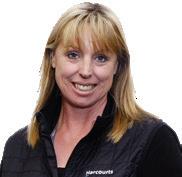



And with the likely hood of a new government just around the corner, we could be looking at a few changes in


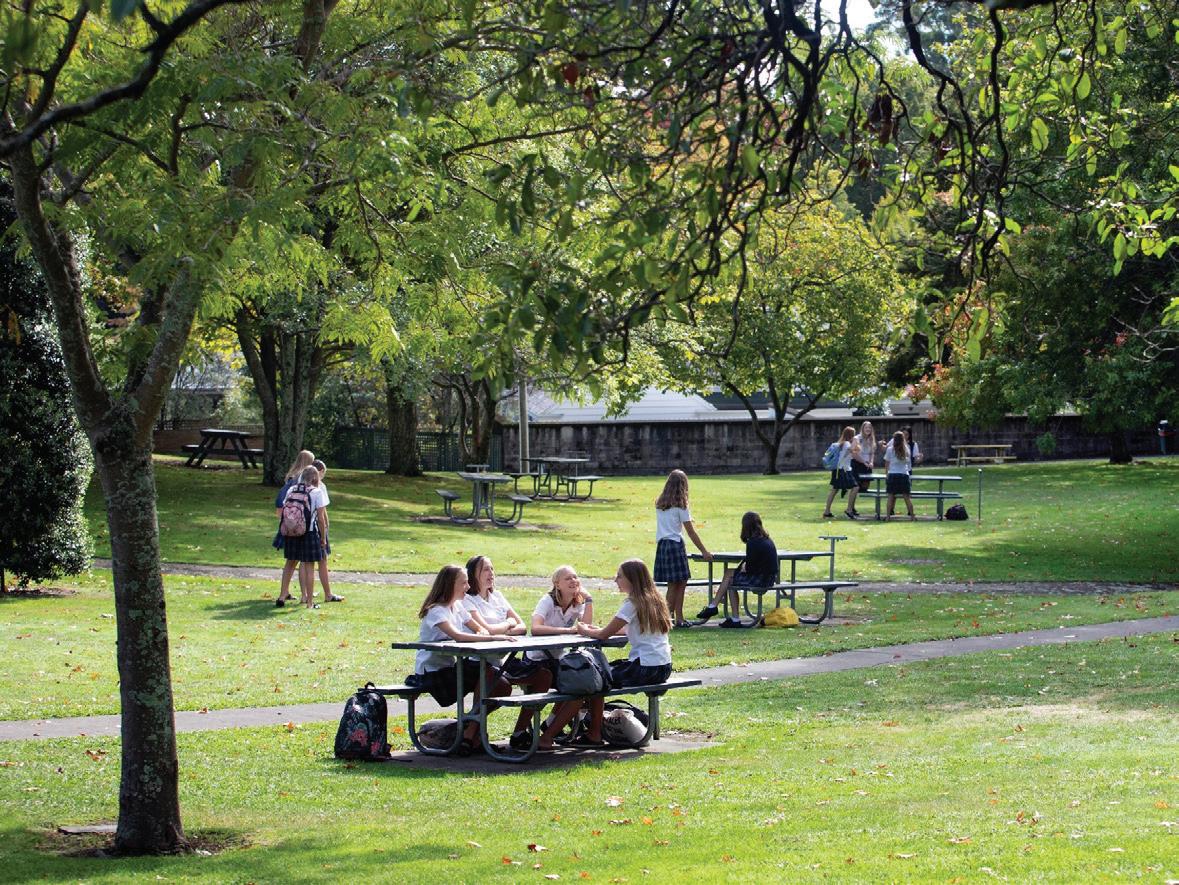


At Te Kura Tamawāhine o Whakatū/Nelson College for Girls boarding is thriving post-covid. Families know that students flourish when they are supported in a safe and inclusive environment and are engaged in activities that are challenging, adventurous and meaningful.
NCG boarding and day students form friendships and build a whanau-like community where everyone is enriched by their differences and shared interests.
-
Our boarding students are supported by a diverse and experienced staff team who nurture a sense of belonging, provide academic and pastoral support, and a healthy dose of fun!

We are proud to provide a quality and enriching boarding experience for students from across New Zealand and the world. Our fees make NCG boarding one of the most accessible and affordable boarding schools in Aotearoa New Zealand.
For further inquiries please contact: Katrina Rowley, Director of boarding, katrina.rowley@ncg.school.nz 03 548 1332 or visit www.ncg.school.nz/boarding
Forest360
In a topsy turvy ETS world where confidence has been waning and the politicians can’t seem to help themselves but keep tinkering with our primary tool to fight climate change, MPI have now announced that costs to forest owners for ETS participation are increasing while letting the entities that actually emit CO2 off Scot-free. These changes were lobbied against very hard from indus-
try participants, but this seems to have fallen on deaf ears.
A new annual charge of $30.25 per hectare (regardless of forest type) and twenty-two new fees related to existing services will come into effect on 19 October 2023. This annual charge invoice will be sent by MPI directly to each ETS participant for the part financial year (19 October to 30 June) in November and will be calculated based on the land registered in the ETS at the beginning of this period.
In subsequent years, invoices will be sent at the beginning of the financial year and cover the year ahead (1 July to 30 June).
The twenty-two new fees will be detailed on the MPI website on 19 October when they become available. A list of the upcoming changes can be found in the most recent Forestry ETS Alert #38. This is a major disappointment to us and the wider industry, who we are working with to handle this challenge. We believe that this cost recovery scheme is fundamentally
unfair as the cost is placed solely on forest owners who have entered the scheme in good faith. These forests provide enormous benefit to New Zealand in terms of assisting in meeting our NDC under the Paris Accord, as well as a host of other positive outcomes.
The fact that they are now effectively being penalised for providing a public good is a bitter pill to swallow. This is emblematic of the continuously changing legislative and regulatory environment of the last two years that have result-
ed in forest owners having to read, digest and react to a series of policy changes that have enormous implications for their forests and the businesses that operate around them.
When coupled with a period of high interest rates and low commodity prices, many forest-owning farming businesses have been forced to generate cashflow through the sale of NZUs in a period where poorly considered cabinet decisions have artificially depressed the NZU price.
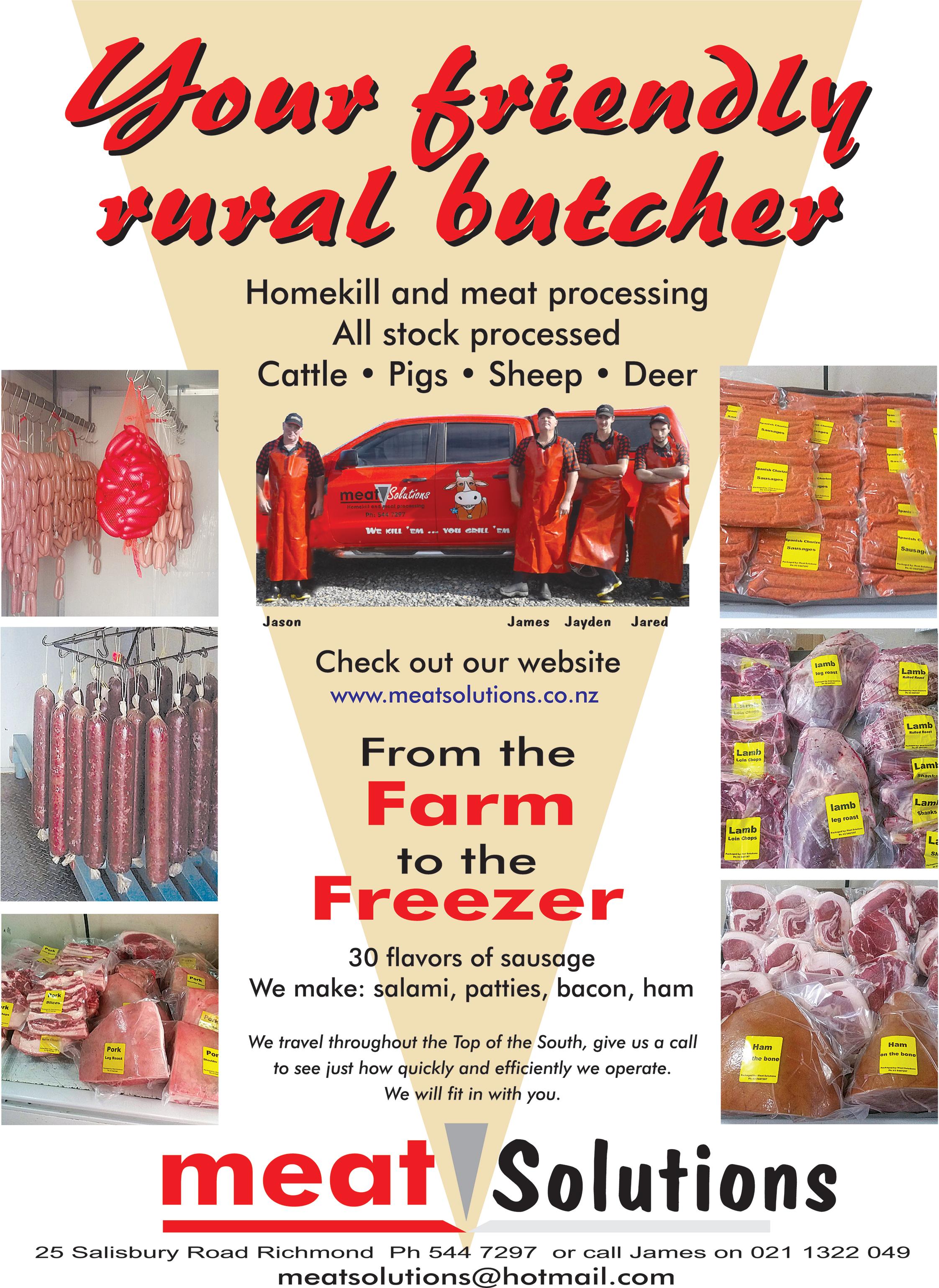
in Aotearoa: New Zealand’s Top
TONY ORMAN
Shaun Barnett is already an established - indeed accomplished - author particularly in the field of tramping books. And Nelson based publishers Potton and Burton have a fine reputation for books of impeccable quality. Ten years ago, Potton and Burton published Shaun Barnett’s “Tramping in New Zealand” which quickly became a best-selling tramping guide of the most popular tramping tracks in New Zealand.

Now Potton and Burton have republished an updated revised second edition.
A feature is the series of brilliant accurate panoramic Geographx maps that give a vivid realistic representation of each route.
Covered are well known tramps like the Milford Track, Abel Tasman National Park, Heaphy Track, the Tongariro Crossing and the Queen Charlotte Track. But readers will find interest in lesser-known ones such as the Nelson Lakes National Park, Mt Arthur and the West Coast’s Paparoa Range, Kirwan’s Track near Reefton, Lake Daniells in the Lewis Pass, Wangapeka Track, Old Ghost Road and Copland valley in south Westland. It’s a superb striking book and the new revised edition will be warmly welcomed by trampers and other outdoors recreationalists generally.


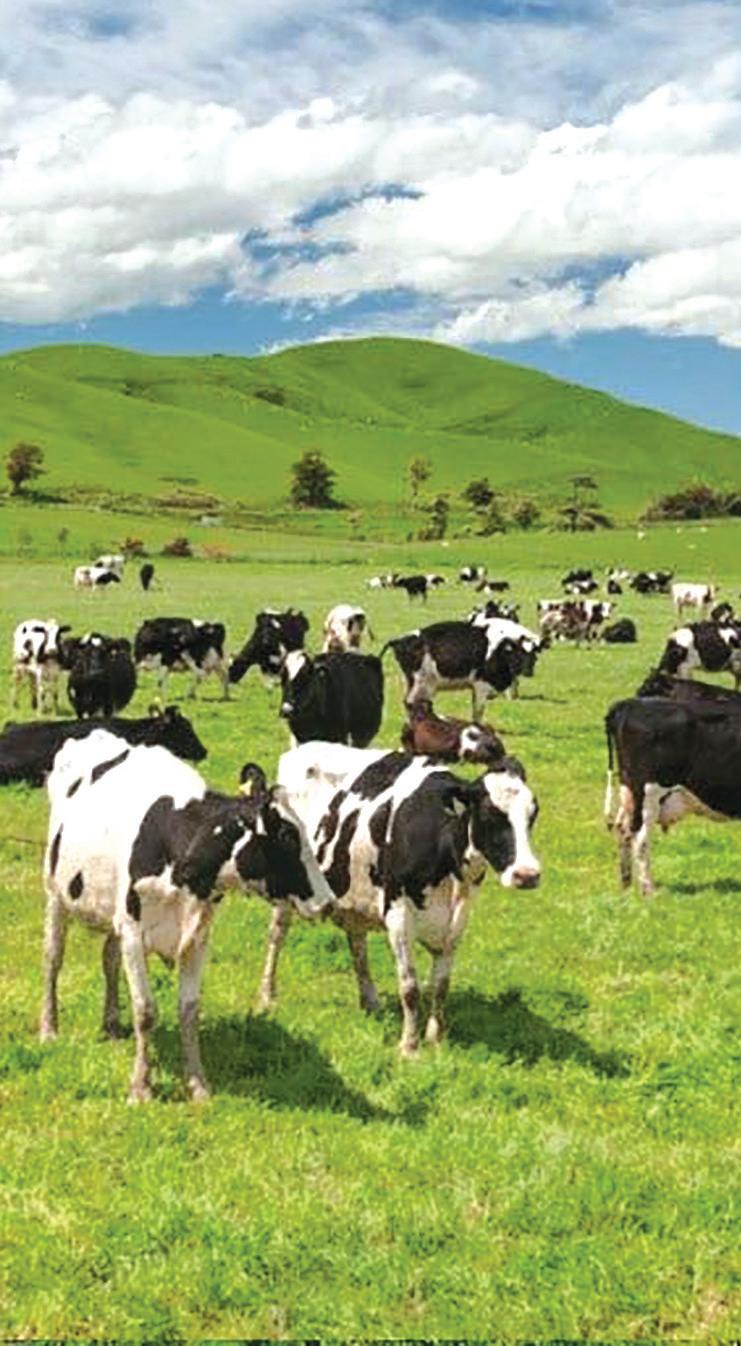


LIC Reproduction Solutions advisor, Jair Mandriaza shares his insights on reproduction performance this season and some tips to ensure herds are in optimal shape ahead of mating.
Having a good assessment of the herd’s actual state of play as far as Body Condition Score (BCS), is a good starting point to help with decision making. If there are groups of cows below BCS targets, it will be important to come up with a preferential treatment plan to help them ride the gap once they start milking again. From then on, it will be about nailing the transition management period.
Farmers are making good use of Once-a-Day (OAD) in the first few days post-calving to ease cows back into milking life. This is commonly used by farmers who have collars and monitor rumination rates as a decision-making point to transition cows onto Twice-a-Day (TAD). Some farmers who don’t have collars keep cows on OAD for 7-10 days to achieve similar results. Most farmers who use this management tool don’t report massive drops in milk yield and talk about “happy cows”. It is also important to note that OAD is not only good for cows, but also takes the pressure off the farm team at a time when there are a lot of different tasks that need to be done.


Keeping the focus on transition management, it may be worth reviewing how the different calving groups (Early, Medium, Late and Very Late) performed in 2022. This can give you an indication of specific times when things didn’t go as well as planned. What we expect based on the 2022 stats is that early calvers have a 10% higher 6 week in-calf rate than medium calvers. Those medium calvers then have a 13 % better 6 week in-calf rate than the late calving cows, which have a 17% better 6 week in-calf rate than the very late calvers. If the numbers on your farm are looking lower, I suggest you focus on the group that didn’t perform as expected. Good transition management will also help to have fewer cows experiencing metabolic issues. The next challenge will be to minimise BCS loss between calving and mating. There’s a balancing act between trying to make your cows
peak as high as they can, while offering them enough energy so that they do not lose more than 1 BCS between calving and mating (assuming they were on target to begin with). At this point, a good indicator on how well things are going may be a comparison on how the year-to-date milk production is compared to 2021 season. We know that 2022 was challenging for a large proportion of farmers in early lactation, so being comparable to it is not necessarily a good sign.
 Jair Mandriaza
Jair Mandriaza

I cannot emphasise enough how important it is to look at the reproduction data for the 2022 season to identify areas of opportunity. If there is a specific group of cows that underperformed, that will help you target those animals this season to address the shortcomings. For example, strategic use of OAD in such groups may well be a good tool at your disposal, if it is implemented at least 3 weeks before mating start date so that the benefits of OAD can be expressed by the animals. Some cows won’t deal well with being milked OAD so some fluidity here is necessary. Next step is the pre-mating period. Measuring the proportion of your herd that is cycling before mating start date will give you an early opportunity at intervening should that number be alarmingly behind target. At least 75% of cows should be cycling 10 days before mating start date and 85% by mating start date.

If these numbers are not met, chances of achieving submission rate targets are diminished. Chemical intervention is an option, as well as proactive targeted use of OAD. Meeting submission rates is important as this is one of the two main drivers of 6 week incalf rate alongside conception rate. Ensuring you and your team are up to date with heat detection best
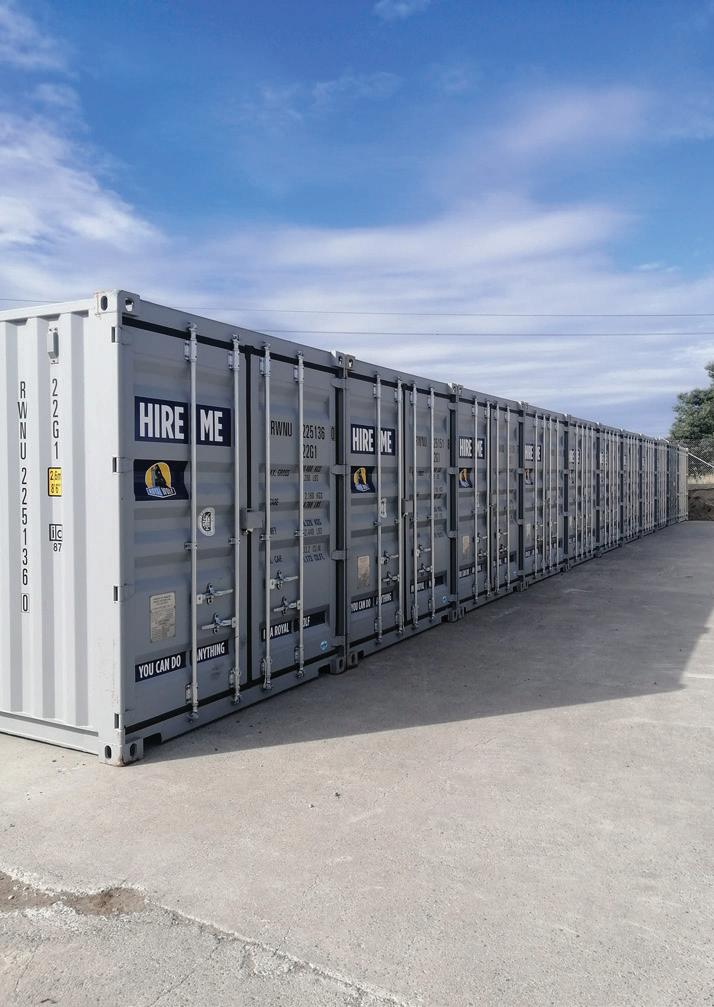
practice is important. The last thing you want to do is execute everything right, get your cows cycling, and then not identify them on heat at the right time.
What we have seen in the national data is that conception rates are higher in the first 3-4 weeks of mating and after that they decrease as the weeks of mating go by.
My take on this is that in the early part of mating we have lots of good quality grass available for cows to eat and the energy balance is there for them to produce and reproduce well. We then hit the inevitable drop in production when the herd leaves the plateau of peak production and starts to decline. The cow is trying to look after herself by cutting back on production, and a drop in milk production is known to affect the ability of cows to get in-calf.
Some of the factors that influence this drop are mostly to do with falling ME intake which means there is less energy available for cows to produce and reproduce.
The reality is that the environment for cows to try and get in-calf in the beginning of mating is vastly different to later in the season which will help explain a good part of the conception rate drop. People may say that the most fertile cows get in-calf early, however we do see very good operators being able to maintain very high conception rates throughout mating period. So, with this in mind here are a few lasting thoughts that I would urge you to take into consideration:
Know where your herd is at from a BCS point of view and think about what you can do to help the cows that are not quite where they should be. Be proactive in understanding where the shortcomings were in the spring 2022 season and make changes if possible. Doing the same thing repeatedly will bring you similar results year on year.
Maximise getting cows incalf early. For most farmers, it will get tougher to get cows in-calf as the mating period goes on. This is independent of whether they are using natural mating bulls or doing artificial breeding.

• John Deere 2250 4x4, non cab, GNS loader, good tractor - coming in
• Iseki 2160 22hp hydro in tidy order - $5,750
• Ford New Holland 7840 SLE and Pearson loader - $23,000
• Massey Ferguson 188 and loader - $9,750
• Fiat 780 4x4 and loader - coming in
• Iseki 6500 and loader - $12,500
• John Deere 1640 4x4 and loader - coming in
• John Deere 6200 cab and loader and bucket$22,000
• Small 1.5 slasher and also 1.2 model - $1,500
• Giltrap 3pl log splitter - $2,250


• Heavy duty 7ft back bladehy rams to angle and tilt - $6,500
• Pallet forks front uro and rear - from $500
• Hustler front fork lift suit 135 MF
• Austin 3 Mtre Heavy Duty Cambridge Roller $5,500
• Rata vineyard cultivator crumbler range of sizes available
• Dual wheels Snap/locks 38” 36” 34” 30” from - $2,200
• Trimax 1.8 Vineyard Mower, tidy order - $3,000
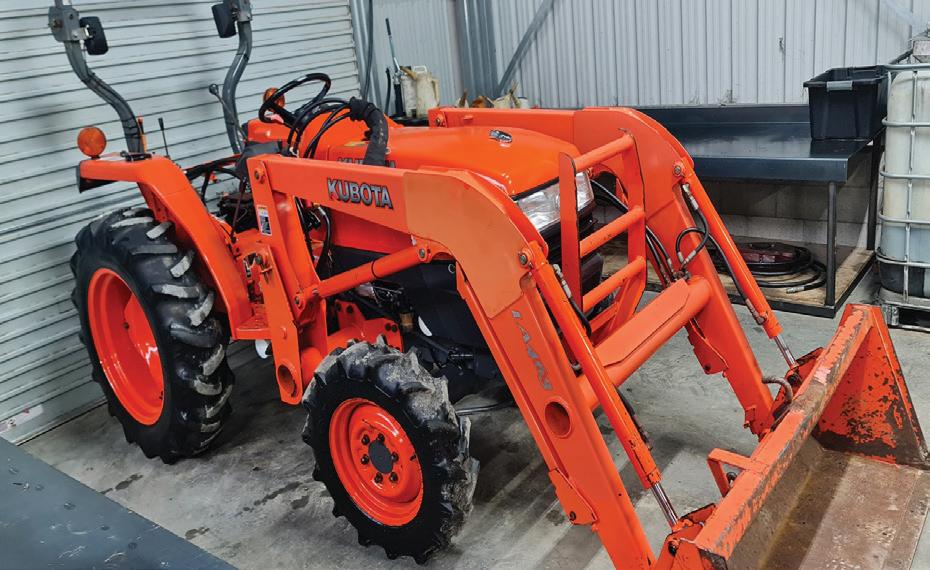
• Hydralada double in-row vine trimmer. Fully serviced with joy stick - coming in
• Mole plough good order - $1,850

• Silvan 600l herbicide sprayer electric controls$5,000
• Celli Tiger 190 Rotary hoe new blade 3m wide cage roller - $9,500
• Fieldmaster m70 topping mower - $3,000
• Celli Pioneer 170 Spike Rotar very good condition - $12,500
• Kvernland TLA 6 metre cultivator crumbler$8,500

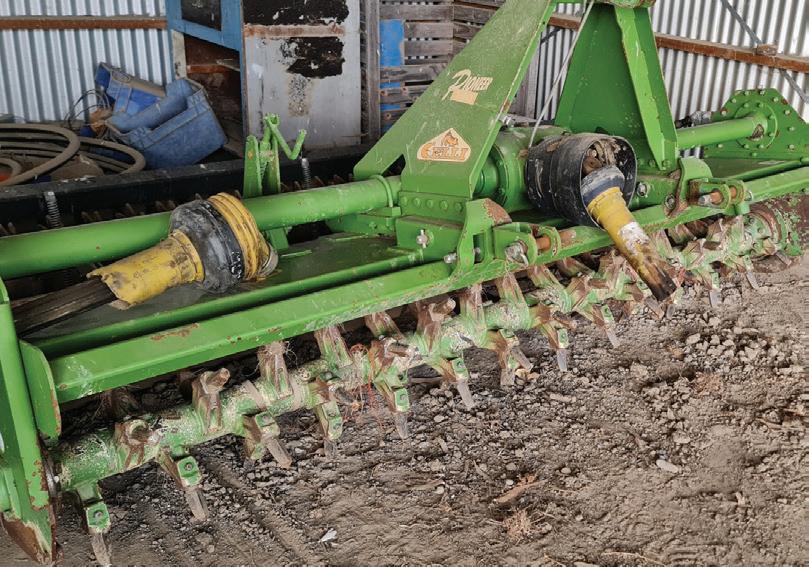

• Kuhn GA 800 mower - serviced and good order ready to go - $9,500

• 10 bale hay impaler - coming in
• 9ft toping mower - coming in
• Fieldmaster M70 roller


Boys involved in the Kaikōura High School Building Academy, tailored for year 11 and 12 boys (15-17 years old) and funded by the Mayor’s Taskforce For Jobs (MTFJ), have been busy learning how to operate and maintain a chainsaw via a practical hands-on chainsaw course.

The chainsaw course teaches students all aspects of using and maintaining a chainsaw. It teaches that a safe chainsaw operator has knowledge of keeping the saw sharp and in good working condition to safely make cuts, wears the correct PPE and behaves in a responsible manner.
It also highlights the numerous employment opportunities where chainsaw qualifications are required or an advantage for the likes of wilding pines work, the forestry sector and in conservation roles. However, Aysia Mc-
Millan the Youth Employment Coordinator for Te Ha O Matuaranga, Learning in Kaikōura, is quick to add that “Adequate knowledge about safely using chainsaws for firewood or around
the garden is also a valuable skill.”
Prior to the hands-on learning the boys spent a full day learning about the chainsaw and were then quizzed on process and potential problems before moving

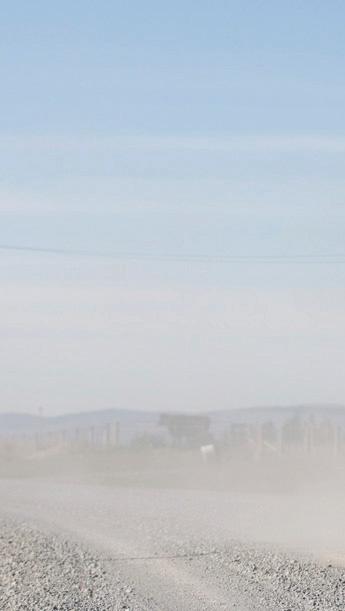






something that interested them.”
Shane Harris, from Harris Training Services, delivered the chainsaw course while local builder, Tom Guthrie, is the overarching Kaikoura High School Building Academy tutor. “We are really fortunate to have both Shane and Tom support youth through the academy, it really wouldn’t be possible without them.” Aysia adds.
The Kaikōura High School Building Academy is a pre trade course around construction involving constructing sleepouts and sheds, building and hanging a door as well as learnings around first aid, health and safety and working from heights.
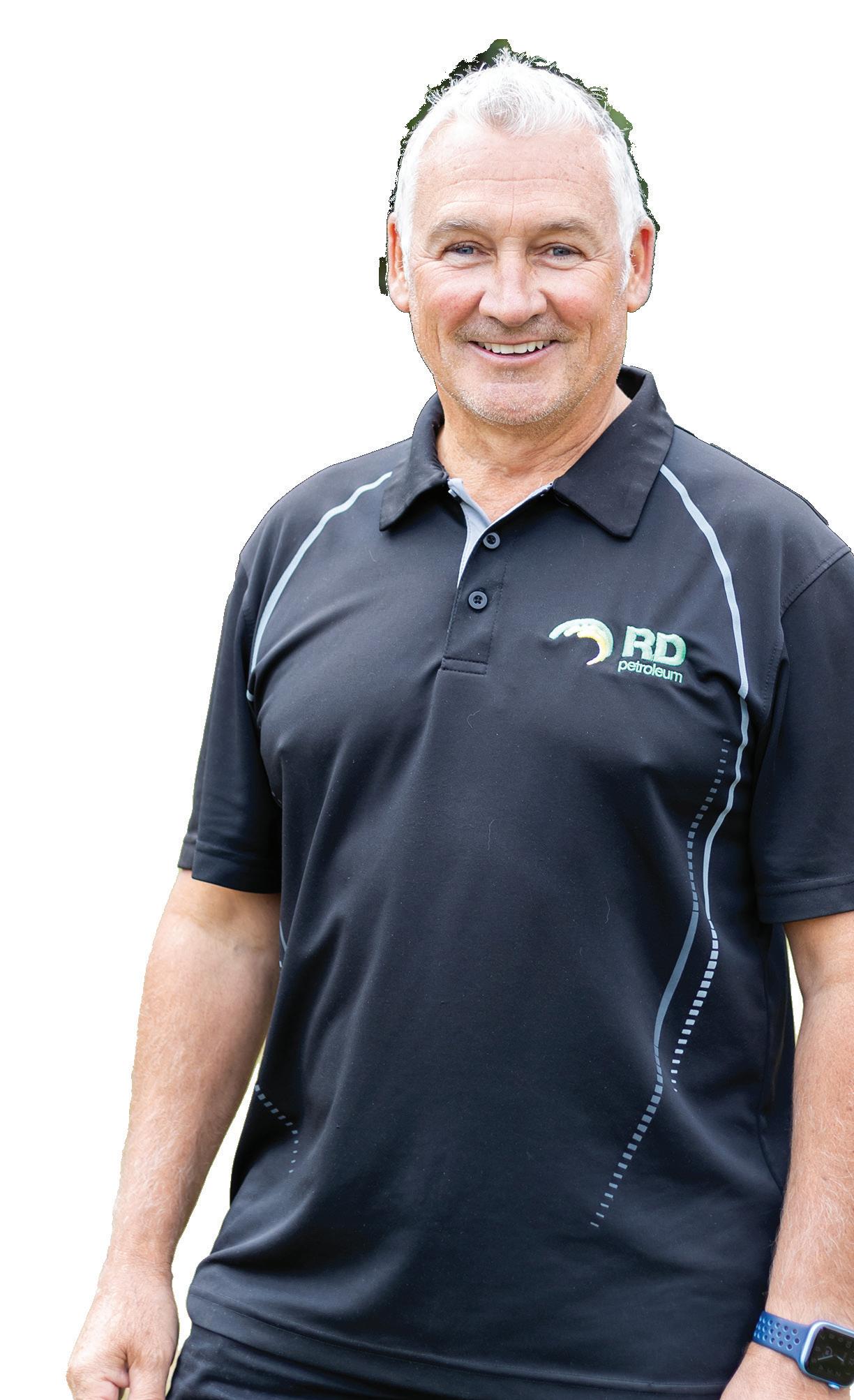

on to the day of practical learning where the chainsaws were fired up. Aysia says that “Out of the ten boys on the course only two had used a chainsaw before, it was great to see them engaging in
Aysia concludes by saying “It’s a great thing for young people to be involved in practical training, and we all learn differently which is one of the reasons our practical hands-on chainsaw course is beneficial to those involved.”
Rural, farm and commercial customers rely on RD Petroleum’s premium delivery service for bulk fuel supply that is fast, efficient, cost effective and delivered on time, every time.
Bulk fuel supply, second to none.
Lindsay and Karla Nalder are calving 310 cows this Spring. “So far it’s going well,” reports Lindsay.
After a horrible wet autumn, a huge amount of rain, much more than normal, winter was good. So far this spring they say they have plenty of feed. “Early spring is going well. There was a big frost around the middle of August here at the confluence of the Aorere and Kaituna Rivers,” says Lindsay. “That’s not
normal for us either.”
Asked how his budget is likely to be this season, Lindsay retorts with a chuckle, “We’re not talking about that!
“I’ve lived through these tough times before. You just sit tight and spend as little as possible till things come right again.”
Lindsay says, he and Karla got off the farm for a short break to see their kids and Grandchildren over the winter. “Nothing too reckless,” he laughs.
Farmers in the Takaka Valley are uncertain about their futures after an Environment Court ruling has left them with more questions than answers. Their uncertainty relates to meeting the Water Conservation Order conditions and a new hierarchy of freshwater management, Te mana o te Wai, after a Te Waikoropupu Springs Environment Court judgement and changes to the Resource Management Act. At a recent meeting in Nelson, rural professionals met to learn from Tasman District Council staff how, and when, the new regulations will be rolled out. Te Waikoropupu Springs are highly valued by Māori and the whole Golden Bay community for their size, clarity and outstanding amenity values. The beautiful springs are fed from water originating in the surrounding back-country of the Takaka and Waingaro catchments.
It travels through the highly complex underground Wharepapa Arthur Marble aquifer system described as a rocky matrix similar to Swiss cheese. The age of most of the water

exiting the main spring is approximately 8-9 years, while younger (3-5yr old water) predominates Fish Creek Spring. A bore close by the spring has water over 100 years-old. Overall, no-one really understands the impacts of farming or the aquifer flow pathways. The introduction of the Cobb dam in 1958 indirectly helps to maintain water flows in the Takaka River which often dries up. A proportion travels underground at Lindsays Bridge and bypasses the Springs entirely to discharge at vents out to sea.
Current scientific knowledge is limited and monitoring inadequate, in terms of testing sites to establish flow paths and lag times. In addition, the cost is beyond the means of both
farmers and council’s budget.

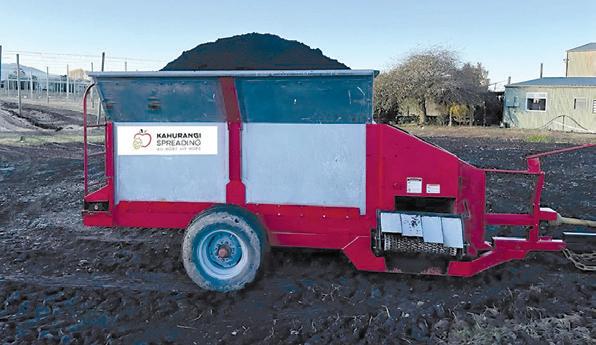


The Court took this into consideration directing the TDCto undertake a comprehensive review of monitoring. Additionally, an increasing trend of nitrogen at the springs means under the Freshwater Regulations, council must create an Action Plan to reverse this to a 2017 baseline state. This leaves the rural community with a high level of uncertainty about the proportion of their contribution to the very small amount of nitrogen increase at the springs since intensification and irrigation consents were granted. The Environment Court has taken a precautionary approach to its judgement and now there is the uncertainty of just how the Tasman Regional Plan will roll out, given the number of changes from central government.
Golden Bay President of Federated Farmers, Cherrie Chubb, said farmers in the catchment are committed to working with Iwi, and the council to keep moving in the right direction.

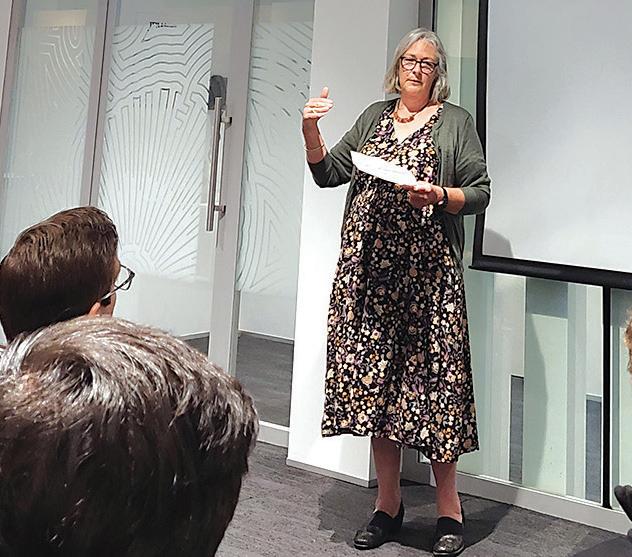

“We all have a role to play. The next phase is to formalise our group and seek funding to establish a baseline of data.”

Cattle: With the warmer weather and early spring rain there is a lot of demand for cattle in the top of the south. The first of the Spring cattle sales in late September had nearly 600 head on offer. Demand was strong and prices reflected that. Top
yearlings seemed to be the target for a number of buyers, especially the exotic and traditional beef types.
2 year steers: $1200-$1800
2 year heifers: $1000-$1130
Yearling steer 250kg+: $780$1320
Yearling heifer 250kg+: $760$1020
There was a feature pen of Autumn-born Angus steers
which fetched: $920-$1010
Sheep: We have not seen huge tradings of sheep in September. Markets seem to be holding steady at this point, but prices are well back on last year.
Ewes: $65-$130
Prime lambs: $110-$160
Store lambs: $70-$105
Ewes with lambs at foot: $65$80 all counted.

Feds National:
While we have all been busy calving and lambing it’s good to remember that the National team up in Wellington have been busy, on our behalf, still working on National and Regional policy that urgently needs to be addressed. This is one of the advantages that belonging Federated Farmers offers –the opportunity to continue lobbying while still farming well. With all the unworkable regulations and compliance being thrown at local farmers and growers there has never been a more important time to band together and have our grassroots voice heard.
Federated Farmers began out of the passion, drive and commitment New Zealand’s farming families have for their industry, their families and their rural communities and the Federations roots go right back to September 1899, with the first meeting of the New Zealand Farmers’ Union. Thomas Portland Smith was the first president of the NZ Farmers Union and was a pioneer of the NZ dairy industry. He settled on raw Kaitaia land in the Far North, where he established one of the first dairy farms.
Federated Farmers were also one of the first organisations to show diversity, with the Women’s Division of the New Zealand Farmers Union starting in 1925 which decades later transi-
tion into Rural Women NZ which stands today. While this was a long time ago its surprising to find that problems regarding politics, farm crime, legislation and compliance, economics, environment, biosecurity and education remain the same. Sure, some of the components have changed a little but the backbone remains the same we still need individuals and organisations to advocate and influence for farming to local and central government and that’s what Federated Farmers do.
On a different note, we urge all farmers, growers and lifestyler’s to take notice of the warnings and information recently out around the upcoming dry season. El Niño has been associated with some of our most severe, long lasting, and costly droughts. The experts are indicating that our dry spell will be a rapidly developing situation, which is typical of most adverse events. Now is not the time to be complacent now is the time to plan.
• Ensure fine fuels, grass and scrub, are reduced from high-risk margins -roadsides, forest boundaries, reserves, rural and lifestyle blocks.
• Inspect and maintain formed firebreaks to ensure they are clear of vegetation and are of the adequate width to serve the purpose they are designed for.
• Ensure all named roads are kept drivable and to a standard suitable for a large 4WD fire appliance to access without losing their beacons and equipment to low hanging branches and to maximise the safety of all personnel by reducing the likely of entrapment, with a minimum 4m x 4m clearance.
• Wind is the main driver of wildfires, if lighting your permitted burn pile, ensure the wind is no stronger than 10kmh, also check the forecast for the following days and avoid lighting up before a forecast weather change as approaching fronts often bring unsettled atmospheric conditions.
• Never store damp hay as there is a strong likelihood of spontaneous combustion occurring, especially 2 – 7 weeks following bailing.
• During high fire risk periods, ensure if undertaking operations in or around dry vegetation that a pressurised water supply is readily accessible. Also, where possible schedule any possible spark hazardous work, welding, grinding, or ploughing outside of the peak heat of the day, mornings and evening cooler temperatures reduce the risk.
• Look ahead to the driest months, is it feasible to forward plan and schedule harvesting/silvicultural operations to compartments that are on the cooler damper southern and eastern aspects of your forests and estates.
After moving home from Australia for an improved family lifestyle, Daphne Woods ended up with a large vet bill for the family dog. The large bill saw her do something she had never done beforemilk cows on the weekends to help cover the cost.

With the vet bill paid, Daphne continued milking and ended up moving to Hokitika to milk cows full-time.
“I ended up milking nonstop for the next six years, at Clandeboye, Rockville Golden Bay,” explains Daphne, “I then had a break and moved back into admin and the transport industry for a number of years where I met my husband.”

Steven, Daphne’s husband, is 5th generation on his family’s dairy farm in Hamama, in Golden Bay.
“We then purchased the farm so, at 50 years old I took on all the admin and compliance that goes with a farming business and feeding calves again,” laughs Daphne. “Which was a huge thing for me at that age.”
Now, 12 years on and the couple milk around 420 cows, reduced from 490, and are fortunate to have decent workers on the farm with them.
“If you’re going to live in a community you need to contribute. My mum died suddenly when I was only 15 and losing her so soon has given me a different perspective. I’m not materialistic, you can’t take it with you, so I enjoy giving.”
It’s not just talk Daphne gives a lot to the local community. She has recently left the A&P show team where she has donated her time for the last seven years which she says was a ‘huge job’. She donates her time to Meals on Wheels, Federated Farmers and the Pōhara Boat Club. Her, and hubby Steven, also rear a few calves and steers which are later sold
with the profits going to local sports and community clubs.
“If we weren’t farming, we wouldn’t be able to give what we do give to the community; our farming really helps others here which is great,” Daphne says. She says water has been a struggle on the farm. “We had to go to court to get our water and it was pretty stressful. Then straight after that the water conservation order popped up which was unbelievable.”
Daphne, alongside other locals, got heavily involved and are still working in this space.
Family is something that is important to Daphne. “The kids and grandkids are always here which we just love. Going forward we are hoping to do some overseas travelling, stuff I haven’t done before, but for now we are sticking around. Golden Bay is an awesome place to live, and we really enjoy sitting here looking over the farm and watching the animals.”
DairyNZ facilitator Mark
Shadwick confesses to hating surprises.
At a budgeting meeting for dairy farmers following the sudden drop in payout, he suggested that farmers should ask suppliers, in every instance, for a quote. Another piece of advice was to say ‘no’ to anyone who came in the gate offering to sell you something.
The meeting at Havelock was attended by more bankers, fertiliser reps and accountants than farmers, who were no doubt busy calving. However, Mark felt that thinking about the urgent tailoring and constant monitoring of budgets was important.
“Farming is a long game not a sprint and we have weathered several downturns in the past. My advice would be to seek early con-
sultation with bankers and advisors; it is not in their interest for you to experience financial difficulties, he said.
“At the same time keep an eye on the basics and make savings where you can.”
The basics include feeding cows as cheaply as possible, which is feeding them off pasture. “If supplements are included in the budget only use them when there is a feed deficit as that is when they are most cost effective. Do not use them to put milk in the vat.”
Fertiliser use: Spread your own if you have the equipment. Only use nitrogen, if necessary, and include sulphur for optimal response. Do not waste it on ground where effluent is being spread.
Fuel: claim your rebate for on farm petrol use. Repairs and maintenance: If your tractor is new and under
warranty, dealer servicing is essential to maintain the warranty, but otherwise obtain a quote from an independent technician.
Minerals: don’t spend unless you have to. Do whatever is working for you, but the cost of wide spectrum minerals may not be necessary.

Insurance: Delete items that no longer apply, increase excess and don’t forget to claim. Review your life cover: Your children may have left home.
Winter grazing: plan early which paddocks to remove from the platform for a crop.
Complete accounts early to claim back provisional tax. Compare the new budget with the previous year. Was there any variant from last year’s budget? Ask for discounts and for time to pay. Remember: Don’t spend unless you have to.
Government proposals that require farmers to prepare freshwater plans is causing farmers frustration, which was vented at the recent monthly meeting of Marlborough Federated Farmers.
Vice-president Richard Dawkins described as “frustrating” that another layer of time-consuming and expensive compliance will soon be enforced.
Scott Adams said promises of benefits to farmers from numerous compliance imposed often seemed hollow.
“We’ve been told if we do all this work we’ll get better returns. Well it hasn’t happened,” he said.
Dawkins added that Marlborough’s water was rated extremely highly in terms of “fresh, clean water”.
“It’s in the high 90 per cent bracket so the question is why?” he questioned.
“If it is to have clean healthy freshwater, do catchments that already have clean healthy freshwater need to spend time and money on these plans?”
Former president Geoff Evans said there was no integrity in dealing with the Government and Council over such matters.
In a recent press release the Marlborough District Council’s Environmental Scientist Matt Oliver said making immediate improvements to water quality is one of the aims of new legislation that, in future, could affect all farms in Marlborough.
In June the Government released the Freshwater Farm Plan Regulations which form a key part of the 2020 Essential Freshwater Package and aim to stop further decline to freshwater, reverse past damage and bring waterways to a healthy state within a generation.
At Council’s August Environment and Planning Committee Oliver said every region in the country must start freshwater farm planning under the new national regulations.
“The first regions to be rolled out nationally were Waikato and Southland on 1 August, and the Marlborough region will be switched on from mid-2024,” he said. “Marlborough will have until the end of 2025 to turn on all our catchments.”

Multiple parties are involved in the implementation of the freshwater plan system, including councils, tangata whenua, farm operators, independent certifiers and auditors and farm advisors.
Over Five Hectares Farms will firstly require assessment to see if a farm plan is needed. If it is, then
one will need to be developed which identifies risks to freshwater and includes an action plan to mitigate those risks.
All farms of five hectares or more in horticultural use, including viticulture, or 20 hectares in mixed, arable or pastoral use will require a freshwater farm plan from 2024.
Dawkins said the many lifestyle properties from 5 hectares and above of vineyard or orchard will be required to have a plan. Analysis of Council’s property records show there are potentially 1,700 freshwater farm plans required in Marlborough according to Oliver.
“The aim is to stop further degradation of waterways,” he said.
“The central concept of Essential Freshwater is Te Mana o te Wai, which recognises that protecting the health of the freshwater protects the health and well-being of the wider environment.”
At Council’s August Environment and Planning Committee he said the regulations require farm operators in Marlborough to produce plans within 18 months of their part of the region being “switched on”.
Farms will firstly require assessment to see if a farm plan is needed. If it is, then one will need to be developed which identifies risks to freshwater and includes an action plan to mitigate those risks.
The farm will need to be certified by an independent certifier and, after 12 months, will need auditing to ensure actions have been undertaken. The Marlborough District Council undertakes region-wide water testing through the State of the Environment monitoring.
Dawkins pointed out farmers were already voluntarily showing environmental awareness in the Waihopai valley such as the local Avon Valley Catchment group which tests monthly at four sites along the Tummil, Avon and Waihopai rivers.
“All test results have been acceptable, under the national freshwater framework. Despite this excellent water quality and stewardship of the land, we will soon have to complete these new farm plans,” said Dawkins.
“I would rather spend my time and money on actual environmental improvements such as planting trees or fencing. However, another several or more days a year and more hard-earned money will be spent on yet another layer of bureaucracy.”

Rosie Dowling is the epitome of the hard-working, resourceful and courageous Kiwi farmer who has overcome a major personal crisis to create a successful farm in southern Marlborough.
In addition to establishing a newly-purchased farm, Rosie’s life was turned upside down with the sudden death of her husband, leaving her a widow with three young children.
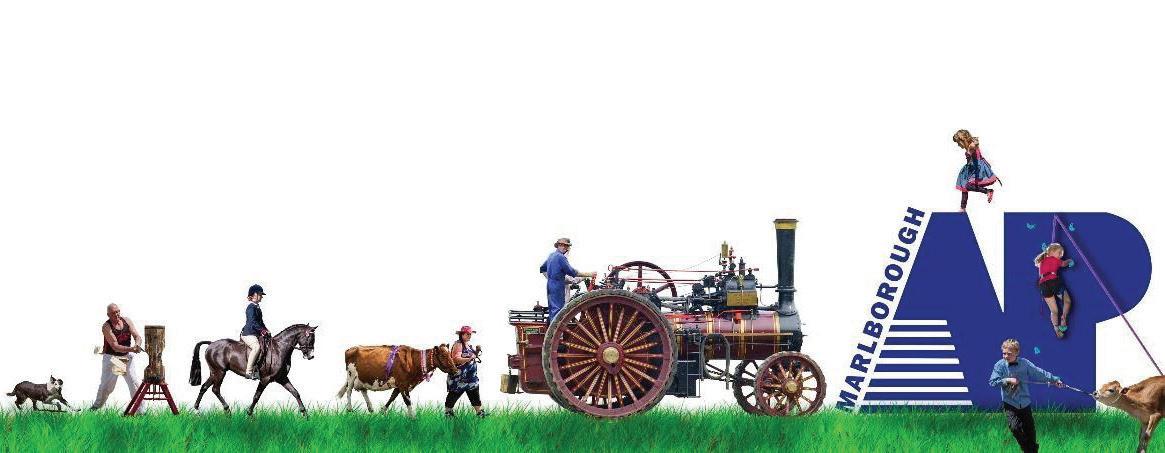
Rosie farms 422ha of east coast, rolling country south of Ward and recently hosted a Field Day organised through the Beef and LambNZ ‘Farming for Profit’ programme.
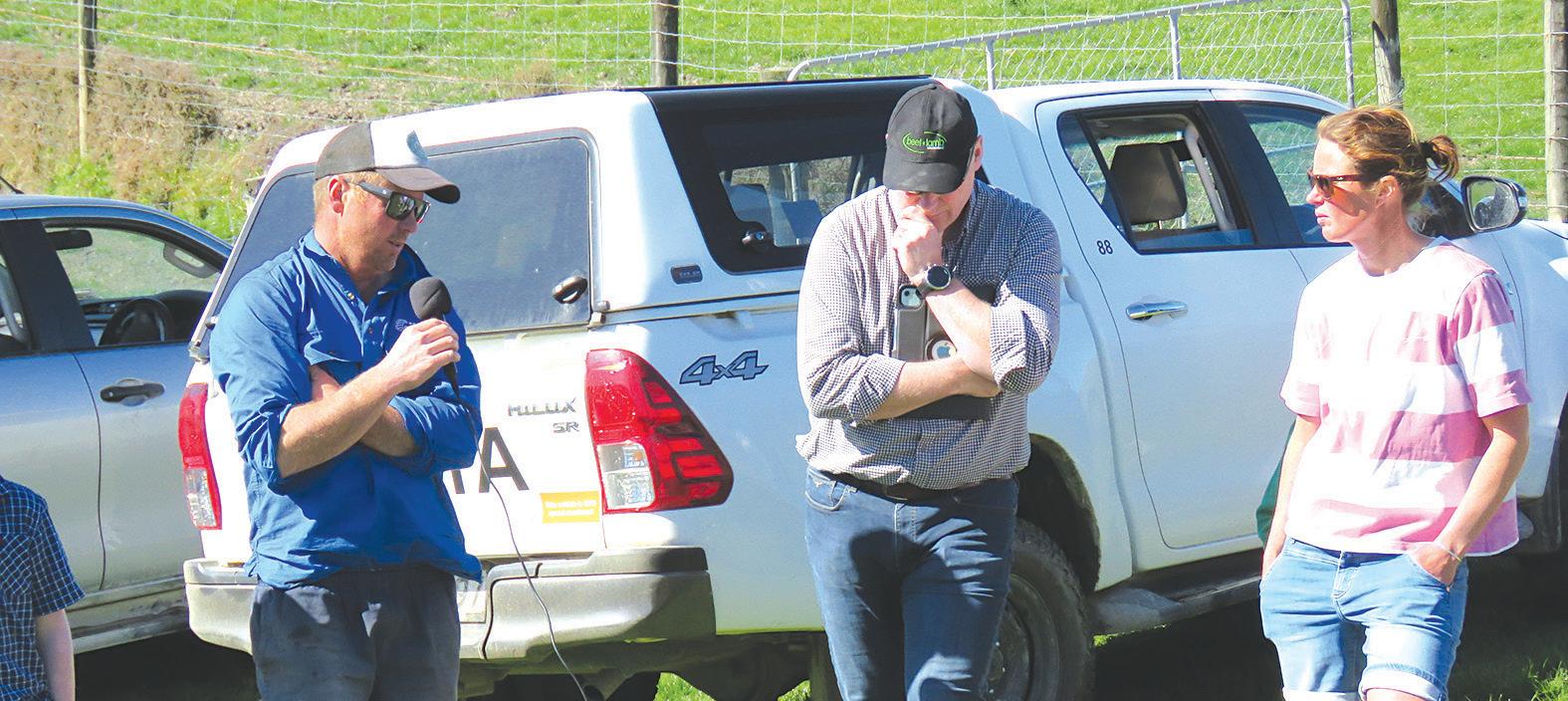


The farm’s over-arching challenge is the variability of the farm due to harsh summer weather. Her farming system has been designed to be flexible and simple, while providing a stable home environment for herself and her three young children Harry, Digby and Olive.

Kintyre Downs was purchased by
Rosie, husband Gavin and Rosie’s brother and sister in-law Simon and Pip Todhunter in 2016. The Farming for Profit group visited the property soon after the purchase and this recent Field Day provided them with an appreciation of the vast strides that have been made.
The priority was to provide fencing, stock water pasture renewal and fertiliser. The hill was divided into 22 paddocks from the original seven and the workable land into 32 from 60. Three wire electrics divide the hill ground and grape posts were repurposed where possible to keep costs down.
Simon estimates the fencing costs at $3 per metre. Second-hand water troughs were acquired through Trade Me and 116ha of pastoral renewal and cropping has taken place. Springs were tapped on the hill and water fed to three 30,000 litre tanks. These, together with some dependable ponds, now provide a reliable water system.
Fourteen hectares of pines have been planted combined with 6ha of poplars and 8ha of natives. This has provided the farm with some diversification of income from the Emissions Trading Scheme. Because of this, the carrying capacity of the farm has been lifted by an additional 830 stock units. In 2020 disaster struck the Dowling family when Gavin suddenly passed away. At the same time Rosie was in Starship hospital with Olive who was suffering from life-threatening heart disease problems, resulting in several major operations and numerous trips to hospital.
Simon and Rosie’s parents Bob and Vicky helped keep the farm going in the interim, but Rosie was determined to make the farm work to provide a stable and secure home life for her family. She recalls taking ‘Gav’s’ dogs out to move a mob of sheep, not knowing their commands or even their names - and the inevitable ensuing chaos. Farming for the dry summer, the 1550 ewe flock is protected as the capital stock, with Friesian bulls being the flexible component of the stocking regime. Lambs are weaned early in December with those over 33kgs liveweight sold
prime. Generally, this amounts to approximately one-third of the flock and the remainder are sold store. All ewes are mated with a terminal sire and replacement ewes are purchased annually. If the season is favourable some lamb trading may be done over summer. Between 60 to 160 bull calves at 100kg liveweight are purchased annually as well as 40 to 60 18-month-olds weighing between 350kgs to 380kgs. Finished bulls are sold from July and all are gone by Christmas. In 2021 Rosie was able to purchase the farm from Simon and Pip. She says that, in a good year there is a profit, an average year it breaks even and a poor year a loss, but she is resolved not to push the property to the limit. Her farming day ends when she picks up the children from school and if some job is not completed that day, it is not important. What is important is to enjoy the farm and provide a comfortable and happy environment where the children can grow up.
The PF Olsen Log Price Index increased $6 in August to $114. The index is currently $5 below the two-year and $8 below the five-year average. AWG prices increased an average of $15 due to the higher CFR sale prices in China.
activity since April. New orders dropped after growing in the prior two months while foreign sales contracted the most since September 2022. Buying levels decreased for the first time since January.
The positive impact of higher log prices was reduced slightly by increased shipping costs, while the exchange rate had little impact. CFR Log prices in China have increased but the market is still fragile.
Master Builders Association of NZ recently undertook a survey of 1,000 sector participants and 88% said that rising costs was their biggest problem. Many projects are being delayed due to uncertain budgets. New Zealand also tends to go into a holding pattern before a general election.
Record high pulp inventory levels
check your proof carefully and approve it or submit corrections by the Final Proof Alterations deadline. submit changes to your ad within the ATOL system at a time that suits you. Just follow the link your ad, then cl ick the APPROVE or CORRECTIONS button right from there - no new emails required!
Inventory of New Zealand pine in China is stable and log demand is typical for this time of the year. Global pulp inventory levels are at record highs with very low demand. The domestic market remains subdued.
Rising costs continue to cause significant issues in the construction industry. The
Total global chemical market pulp producer inventory volumes have reached a record high, with bleached softwood kraft (BSK), which includes paper grade and fluff pulp, more pronounced than bleached hardwood kraft (BHK). The (BHK) producer inventory volume reading is below the the historical peak in mid-2019, while BSK inventory volumes continue to set new record highs each month. This excess inventory is expected to persist as demand remains low and new supply enters the market.
China radiata log inventory has remained at around 2.7 m3. Daily port off-take has reduced slightly but remains steady ranging between 6070k m3 per day, which is in the normal range for this time of the year in China. Macro-economic indicators from China continue to worsen which indicates the demand for logs in China will not increase as it usually does when China enters its normally busiest construction time of the year.

The China Caixin Manufacturing PMI continued to fall from 50.5 in June to 49.2 in July. Manufacturing conditions picked up for the second month in a row, but at slower levels then in May. Any PMI number above 50 signals manufacturing growth. This was its lowest reading in six months and the first drop-in factory
Please check your proof carefully and approve it or submit corrections by the Final Proof Alterations deadline. appro ve or submit changes to your ad within the ATOL system at a time that suits you. Just follow the link email to view your ad, then cl ick the APPROVE or CORRECTIONS button right from there - no new emails required!
The demand for pine logs in Kandla is lukewarm due to monsoon rains. Uruguay to Kandla shipments have reduced to only one vessel for August departure and September arrival. CIF price is 118 to 120 USD per JASm3. The price for Uruguay green pine sawn timber in Gandhidham is soft at 491 INR per CFT. Australian radiata pine green sawn timber is sold at 531 INR per CFT. Seasonal demand may occur in Kandla in November, after the Diwali festival. Tuticorin is sourcing South Africa pine logs in containers at 110 USD levels. Green pine sawn timber is selling within a range of 550 to 575 INR per CFT.
The Professional Forest Management Company of Choice.
The Professional Forest Management Company of Choice.
PF Olsen is the leading provider of independent professional forestry services in New Zealand. Contact us now for all your forest management needs:
PF Olsen is the leading provider of independent professional forestry services in New Zealand. Contact us now for all your forest management needs:


PF Olsen is the leading provider of independent professional forestry services in New Zealand.


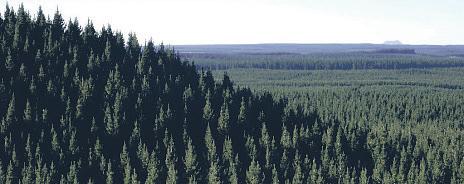
• Carbon accounting and advice
“Aspect are aligned with our values of providing value for money for our clients. They stand by their work and will ensure that expectations are met.”

Contact us now for all your forest management needs:
• Harvest management and log marketing
• Harvest management and log marketing
• Harvest management and log marketing
• Forest establishment and tending
• Forest establishment and tending
• Forest establishment and tending
• Forest valuations
• Forest valuations
• Forest valuations
At Aspect we’d love to hear your story. We can offer an all-inclusive service whether it be a forestry operation or land development. In this economic climate, we know costs must come down and value needs to increase. Where do you have hidden value in your forest or land? Work smart, create certainty, and build resilience. Start by giving us a call and we’ll put the jug on.
• Due diligence on forest purchases/sales
• Due diligence on forest purchases/sales
• Due diligence on forest purchases/sales
Nuske – Branch Manager, PF Olsen Nelson
Sealord is investing $10 million over the next ten years in a carbon offset programme that will see underutilised Te Arawa whenua around the wider Rotorua region developed into permanent forest.

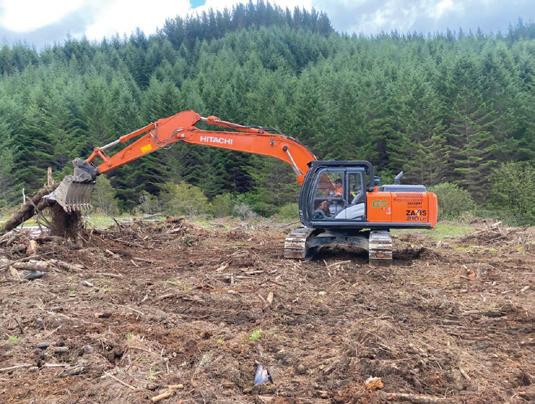
The programme, developed by Te Arawa Fisheries and New Zealand Carbon Farming (NZCF), will help offset some of the carbon resulting from Sealord’s operations, maximise the potential of marginal land, create jobs and improve whānau outcomes, and help improve the local environment, including water quality in and around Te Arawa lakes.
Sealord CEO Doug Paulin says the programme supports Sealord’s sustainability focus, helping the company to achieve its carbon reduction goals.
“Sealord is committed to
sustainability and playing our role in helping to address climate change impacts on future generations. We’ve

With fuel burned by our vessels representing over 90% of our scope 1 emissions, we can only reduce to a certain point with our current fleet
Doug Paulinalready reduced our total emissions by 23.7% since we started measuring our carbon footprint in 2019, through investment in new vessels, fuel optimisation, focussed maintenance and reducing fossil fuel use in our land-based operations.
“Now that we’ve made some significant changes, the challenge is hitting our science-based
carbon emission targets as there are limited options for further big gains within our operations. This long-term plan helps us further mitigate climate change through off-setting as a final option.”
He adds, “With fuel burned by our vessels representing over 90% of our scope 1 emissions, we can only reduce to a certain point with our current fleet.”
“We are actively monitoring development of engine technology and new fuel sources, but this may be decades away from becoming viable in our fleet. While we wait for this, we have made the decision that we must invest now to enable Sealord to have options in the future so we can meet our carbon commitments.”
New Zealand Carbon Farming will undertake the physical planting and forestry management.


trogen in July and August does increase September growth however at the expense of growth in November and December.
In an ever-changing world it’s comforting to know that some things remain the same. September nervousness has been a constant for as long as I’ve been involved in pastoral farming. Animal demand increases with lambs and calves hitting the ground and the steadily lifting requirements of their mothers.
Available feed supplies dwindle by the day, here in the South soil temperatures at the time of writing are still well below 10oC, the temperature at which large amounts of nutrient, including nitrogen, flood the soil driving spring growth.
This will have taken place by the time this article is published however there are still some important issues between now and Christmas to think about. The application of synthetic ni-
You can’t have something for nothing, and increased nitrogen stimulated early season growth always comes at the expense of later season growth.
This has in large part driven the ‘grab what you can before Christmas’ mentality, resulting in shortened intervals between grazings and a sense of chasing one’s own tail.
Nitrogen driven feed in September and October is high in crude protein, more correctly nitrates. Excess intake by grazing animals results in rapid weight loss, calcium/magnesium and trace element deficiencies as animals excrete feed prior to full digestion. This ratchets up the pressure on operators who often feel they are at best limiting damage. Then there’s rising milk urea levels with excess urea in urine leached through wet soils resulting in higher than desirable nitrate-N
losses to groundwater. These issues are often regarded as the price paid for high production, yet there are farmers whose spring production is significantly higher overall than mainstream. By using Functional Fertiliser products and implementing longer interval grazing management, costs are reduced and profitability is such that the decision is how the surplus is best spent.
The amount of energy supplied by sunshine is almost everything
Ballance fertiliser has reported that, compared to the $30 tonne a tonne paid last year to shareholders, no rebate will be paid on the products shareholders brought during the year.
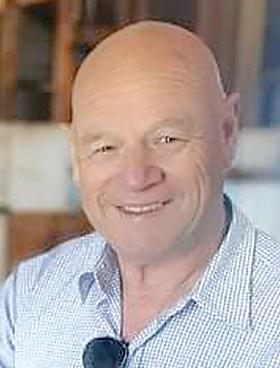

The company has announced a financial year of unprecedented challenges cutting profit after tax by $20 million to $35m and writing off $51m on inventory.
Fert prices have reduced around $75-$150 /T and farmers are now paying around $450/T less
than this time last year. Ballance said that international fertiliser prices are returning to pre-pandemic levels and the farmer- and grower-owned co-operative is committed to providing affordable nutrients in the coming season.
in spring. Still bright sunny days result in the rapid lifting of soluble sugars in plants with more nitrate converted to full protein. Protein to fat ratio in milk lifts, lactating animals lose less weight, animals graze rather than browse and there’s genuine pleasure in spending time in the paddock with animals. Even without synthetic nitrogen applications there’s an excess of nitrogen available which requires managing. The best option is
longer covers allowing the natural process of photosynthesis to fully take place.
To achieve this, grazing intervals are best maintained so that 3500kgDM/ha is available for lactating cows, which may mean an optimum interval of around twenty-five days.

As a rule of thumb, a genuine 30 days between grazings by Christmas results in one grazing in January, one in February, and a portion of the property grazed prior to autumn rain arriving, a normally easily manged situation. Clover growth has and will always remain the key to pasture growth from mid-November until midMarch, a 120-day period during which time 50% of the annual total pasture is often grown. Understanding the soil fertility inputs and management techniques necessary to maximise growth over that time can make the difference between profit and loss.
For more information talk to Peter on 0800 843 809.
 JOHN BARNES Fertilizer New Zealand
JOHN BARNES Fertilizer New Zealand
Regenerative farming ‘relates to improvements of a place or system, especially by making it more active or successful’.
The last 70 years of agriculture has seen large volumes of growth in all agricultural production, while at the same time the land which has produced this production has become polluted and, in many cases, lost its structure with documentation showing the loss of topsoil to erosion. There seems to be a disconnect between the conventional best practice of ‘forcing’ the land to produce food to feed the populace and looking after the land that produces food and feeds us.
All farmers are very aware that food must be produced to feed the populace Regenerative famers work in harmony with the land
for the greater good of all. This means that there will be areas that are not suitable for certain types of farming. Soil biology is protected when cover crops, companion planting is used to give nutrients back to the soil. This all fits into what is broadly called an ecosystem.
Now we have a better understanding of what regenerative farming practices are, the question now is ‘how to get started’? Fertilizer New Zealand provides commercial biology for the soil, one, in particular, has a dry product that is easily spread using conventional land based spreaders. This product has been commercially available for over 18 years. Giving PROTECTION and PERMANENCE to the soil and plant that live within the soil and its environment.


BEEF+LAMB
B+LNZ, along with Federated Farmers and DairyNZ, has been working with leading climate scientists from Oxford University, to inform a submission to the Climate Change Commission on New Zealand’s methane targets.
The global understanding of climate change science has evolved significantly since New Zealand’s targets were set in 2019.
With the Climate Change Commission (CCC) set to review New Zealand’s methane reduction targets in 2024 in line with the Zero Carbon Act, Federated Farmers, B+LNZ, and DairyNZ commissioned this research to help inform the conversation and are asking the CCC to take this new research into account and set targets based on a climate warming approach. This research will help work out the most appropriate way agriculture can contribute to New Zealand’s climate goals. The study, led by internationally
respected climate scientist Professor Myles Allen, measured the warming impact of New Zealand’s current methane targets.
Allen is a Professor of Geosystem Science at the University of Oxford, Director of the Oxford Net Zero Initiative, and has been described by the BBC as ‘the physicist behind net zero’.
“The report tells us that the current reduction targets could see methane offset all of the expected additional warming from carbon dioxide and nitrous oxide from the entire New Zealand economy,” says Jim van der Poel, Chair of DairyNZ.

“Essentially the current targets would see New Zealand peak its warming in the 2030s and reverse back to 2022-27 levels which is well ahead of most other countries which are currently aiming to achieve peak warming (‘net zero’) from 2050.
“The research is a critical contribution to the conversation about climate change and raises serious
equity concerns for farmers who may be being asked to do more of the heavy lifting, and bear more of the cost, than other parts of the economy.
ments, then a 15% reduction in methane would see New Zealand methane contribute no additional warming from 2020 levels,” says Kate Acland, Chair of Beef + Lamb New Zealand.

The report notes that if countries significantly increased their current levels of ambition a reduction of up to 27% may be required.
“This is significantly lower than the current methane reduction range of 24-47% and demonstrates the importance of taking a warming-centred approach to emissions reduction.
that we’re responsible for half of New Zealand’s ongoing emissions, but this report clearly shows that we’re not responsible for half of the ongoing warming – and warming is what we’re trying to prevent.
“Farmers have been making huge progress in reducing our environmental footprint and our methane emissions have been stable or declining for the last decade.
Contact
“We need to be taking a science-led approach to the targets and its important they reflect the impact each gas will have on warming,” says van der Poel. The study also considered what level of reductions would be required for methane from New Zealand to make no further contribution to global warming.
“The report found that if other countries meet their existing emissions reduction commit-
“It is critical we consider the most up to date science to give farmers confidence about what they are being asked to do,” says Acland.
“The current methane reduction targets have been a real point of contention for most farmers who have felt like they’ve been asked to go further and faster than needed – that’s why this review is so important,” says Federated Farmers President Wayne Langford.
“For years farmers have been told
“If we want to get an accurate picture of how we are progressing as part of global efforts, it’s important that we measure and report our emissions based on their warming impact. Total emissions just don’t give you the full picture,” says Langford.
B+LNZ, DairyNZ and Federated Farmers will continue to inform farmers and New Zealand communities about warming impacts ahead of the Climate Change Commission’s public consultation in 2024. Farmers will then have the opportunity to have their say on the Commission’s advice on targets in 2024.
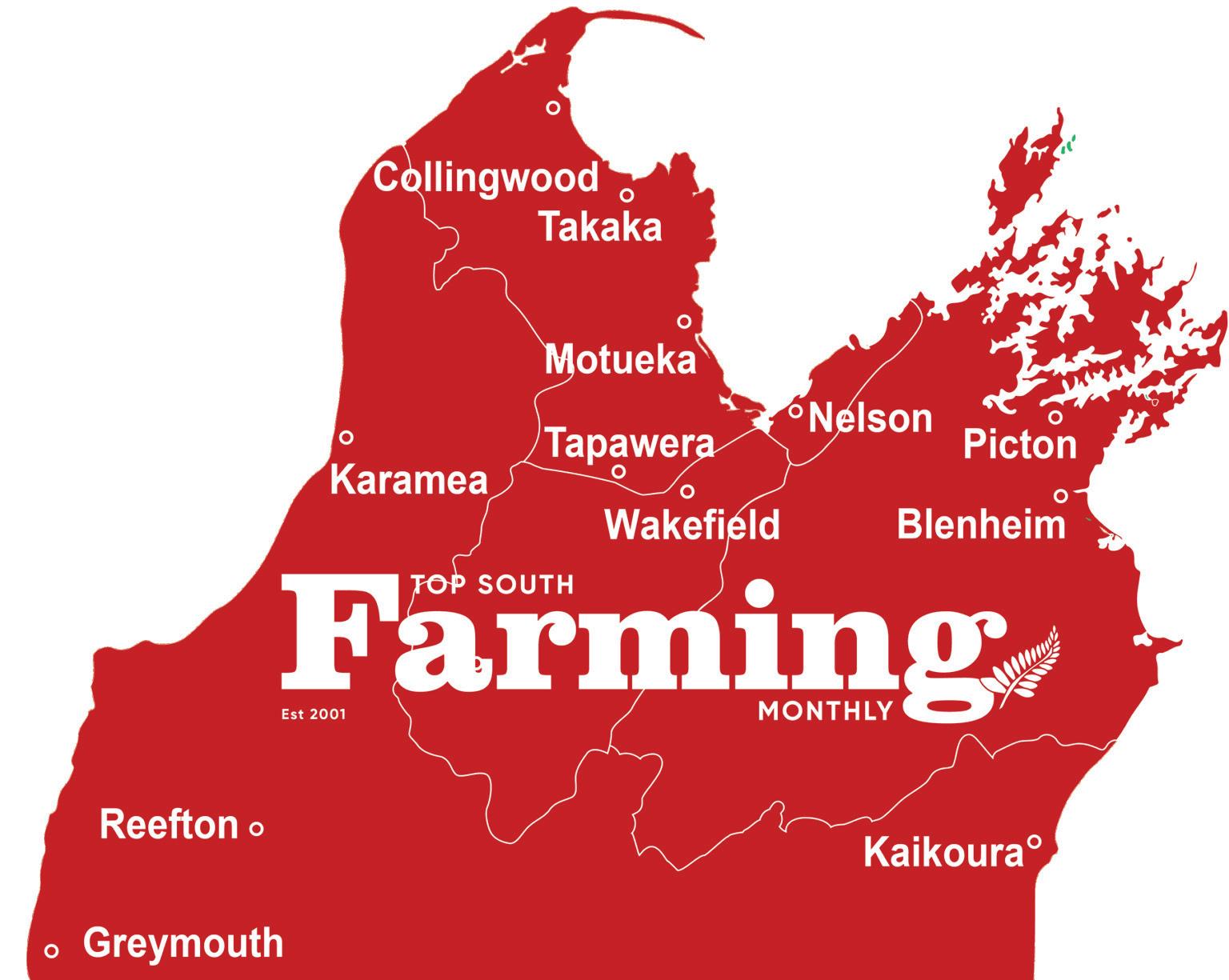
Caltex Wakefield
Farmlands Richmond
Farmlands Motueka
PGG Wrightson Murchison
Brightwater NPD
BMTT
Tractor Repairs & Spares Richmond
Harcourts Richmond
Bayleys Wakefield
Tasman Honda
MS Ford
Top South Media
Farmlands Hokitika
Farmlands Greymouth
Tasman AG Ikamatua
Farmlands Westport
Karamea Visitor’s Centre
PGG Greymouth
Buller Vets
Farmlands Blenheim
Seddon Supermarket
Renwick Supervalue
Tractor Repairs & Spares Renwick
Farmlands Kaikoura
PGG Kaikoura
Rai Valley Brick Oven
4 Square Havelock
TSM Marlborough
It is critical we consider the most up to date science to give farmers confidence
Kate Acland
Horticulture New Zealand (HortNZ) welcomes the National Party’s Primary Sector Growth Plan which includes provisions to make fruit and vegetable growing a permitted activity.
HortNZ General Manager Strategy and Policy, Michelle Sands says it is vital for our country’s food security that fresh fruit and vegetables can be grown and supplied through a network of growing areas all-around the country.
National is promising that under a new National Environmental Standard (NES), fruit and vegetable growers will no longer need a resource consent to produce more food and, crop rotation within catchments will be a permitted activity.

Sands says crop rotation is an



area where growers have encountered barriers.

“Vegetable growers rotate crops to preserve soil health and that often means growers have non-contiguous areas of land they own or lease, and they grow on changing land parcels over time. Consumers and growers would benefit if resource consent for these activities was no longer required.
“Currently, there are rules in some regions that restrict crop rotation and prevent vegetable expansion, so growers cannot increase production to keep up with New Zealand’s population growth, these rules add complexity for growers and costs for consumers.

“Most growers are conscious of managing their environmental effects. The sector’s large-scale adoption farm

plans support growers to implement the latest research on those practices that manage environmental effects.




“As New Zealand transitions to a lower emission economy, horticultural products will become even more important. Fruit and vegetables are the lowest emissions food product option for New Zealand. As the world moves to reduce emissions, this will create more demand for plant-based foods and New Zealand has a favourable climate and productive land to be able to meet that demand,” said Sands.
Providing for the supply of fresh fruits and vegetables in planning rules will help growers produce more healthy food to feed New Zealanders at a reasonable cost while incorporating best practices to boost our precious soils.
While relaxing and having a few beers one evening with friends and discussing how prevalent mental health problems are, the plan for a Horty boys’ calendar was hatched to help in the Horticulture community. The idea gained momentum and the group of friends said, “Let’s do it.”
The Horti Boys calendar is a light-hearted fundraiser for the serious issue of mental wellbeing. After a tough couple of years for the sector, HortNZ together with 12 other horticulture-related businesses, are sup-

porting the 2024 Horti Boys calendar developed by orchardists Hamish Rush and local orchardist Evan Heywood. Photographer Steve Hussey has captured the tasteful yet playful photos of growers in the classic firefighter calendar style. The proceeds from the sale of these calendars will go to two organisations to support mental wellbeing: FarmStrong and The Care Foundation.

Your copy can be ordered from https://hortiboys.com







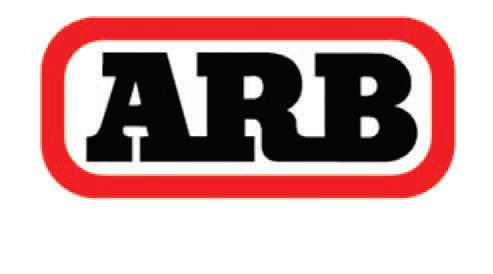
KEN STRUNGNELL

For more than two decades Subaru NZ have invited me to car launches usually in Central Otago and then sent me all of their range of new cars to review. I’ve appreciated just how good they are with the purchase of an XV Hybrid for my wife. I also owned a Brumby Ute in the 80’s [great pity they discontinued it].
However, Subaru NZ weren’t able to get a new Turboed Outback for the South Island journo’s. Fortunately a trainee on my 4WD program arrived in one and long story short lent it to me for the day. He had recently upgraded from the 6 cylinder Boxer Outback and felt the GOOAT 6th generation was “underpowered”. That insight was shared by motoring commentators at the time especially as in other markets the XT turbo version was available. Long term readers of the then
Nelson Marlborough Farming paper may remember I penned a comparison piece on the new ZB Commodore 3.6 V6 Wagon AWD and the 3.6 Outback. It suited the 6 cylinder engine and so when late in 2020 the sixth edition of Subaru’s flagship Outback launched 25 years ago self titled The Greatest Outback of All Time [GOOAT], it felt it was missing something. The 2.5 litre Outback normally aspirated 129kW 235Nm Boxer has now been fitted with a turbo charger upping the ante to 183kW/350Nm from a 2.4 litre engine. The difference in performance is dramatic and worth the wait despite incurring the punitive clean car tax. The silky smooth Subaru six has been replaced by the pleasing turbo whine complete with impressive acceleration from torque produced lower in the rev range and almost instantly available. The other big advance is upping the
braked towing limit to 2400kg.

The top spec XT Touring version now empties the bank account by $67.990 up $10,500 plus tax.


The now well proven dual X Mode enhances the full time AWD, delivering power to the wheels that grip while sidelining slippage. It does so by constantly monitoring the traction available to each wheel and centralising control of the engine, transmission and brakes.

Subaru does not offer a manual version so it is possible for all drive to be delivered to just one wheel. However it is very capable on deep shingle, through mud and surprisingly deep water. I was dismayed that the hill descent control button had been deleted until I realised that it is automatically activated with the Dual X Mode offering Snow Mud and Unsealed Steep Surface trac-
tion control. With the standard 220mm of ground clearance I didn’t hear or feel a scrape while off road, in truth the Touring was very quite on all road surfaces.
Interior Outbacks feature an excellent 11.6 inch tablet touch screen with satellite navigation, Android Auto, Apple Car Play Bluetooth, CD and radio as well as USB connectivity. Most controls are now touch sensitive, though retain the tactile volume and tuning as knobs that are both easier to adjust and simpler. I’m not so sure
about the invasion of privacy the camera monitoring attention system is.
The Turbo is really in its element, with permanent AWD road holding is brilliant, body role well controlled and irrespective of surface is commendably quiet. Four wheel disc brakes pull the wagon up effortlessly. The dramatic improvement in performance is so welcome and lessons both the purchase pain and that at the pump where it sips 95 octane at around 9 litres/100km.

The Rural Noticeboard is for local not-for-profit community groups and organisations to advertise community events or projects that will be of interest to our 35,000 rural readers over the top of the south. Thanks to the team at Tasman Honda for making this noticeboard possible. If you have an up-and-coming project or event that you wish to place on this noticeboard, please contact eloise@topsouthmedia.co.nz

Step through the process of preparing and monitoring accurate farm budgets to stay on top of farm finances. Have confidence in achieving longer-term goals such as self-employment or growing your farming business. This practical and interactive three-part-day course helps to clarify what you want to get out of dairy farming and walk away with a business plan you can present to apply for finance, at job interviews and with your business partners.
• Build a positive and profitable financial plan for going forward
• Learn alongside other farmers and from farmers (Dairy Training tutors are farmers)
• Investigate future options for big-picture goals like selfemployment or growing your sharemilking or farming business







Marlborough Library, 15 High Street, Blenheim Wed 11 Oct 2023, 1:00pm–3:00pm
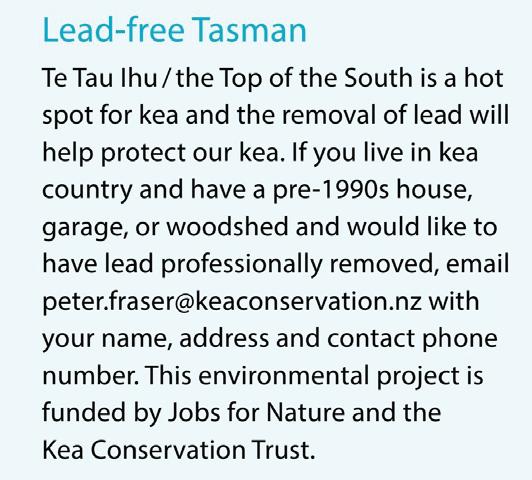






Free Admission
If you need help with your family history research, come along and speak to a member of the Blenheim Family History Group. With lots of experience and a passion for tracking down ancestors, a member of the Blenheim Family History Group will be able to answer your questions and provide hints and tips.
No appointment is necessary.
• Communicate with your bank and accountant to get the support and understanding you need
• Feel comfortable in a supportive, interactive and user-friendly learning environment for all levels
• Balance learning with other commitments





• Qualify with the Business by the Numbers credential (15 Level 5 credits) recognised in agribusiness Diploma studies.
Free course, designed for managers, self-employed or those considering self-employment anywhere in the Top of the South. 3-part days in person, or fully online. Held between milkings. Small class sizes (limited numbers)
Head to www.dairynz.co.nz to register or contact Jenny Sinclair on 0800 467 768
